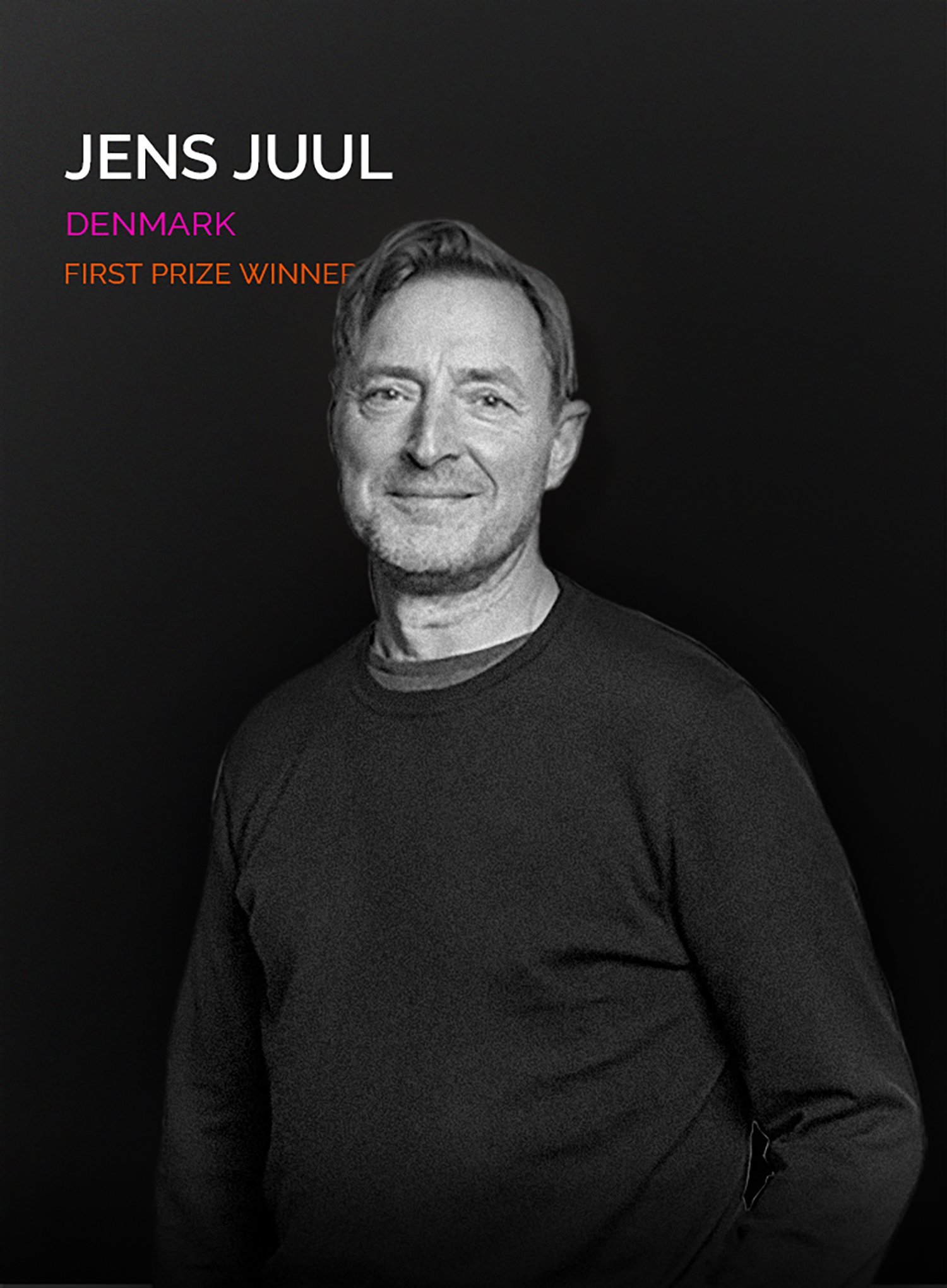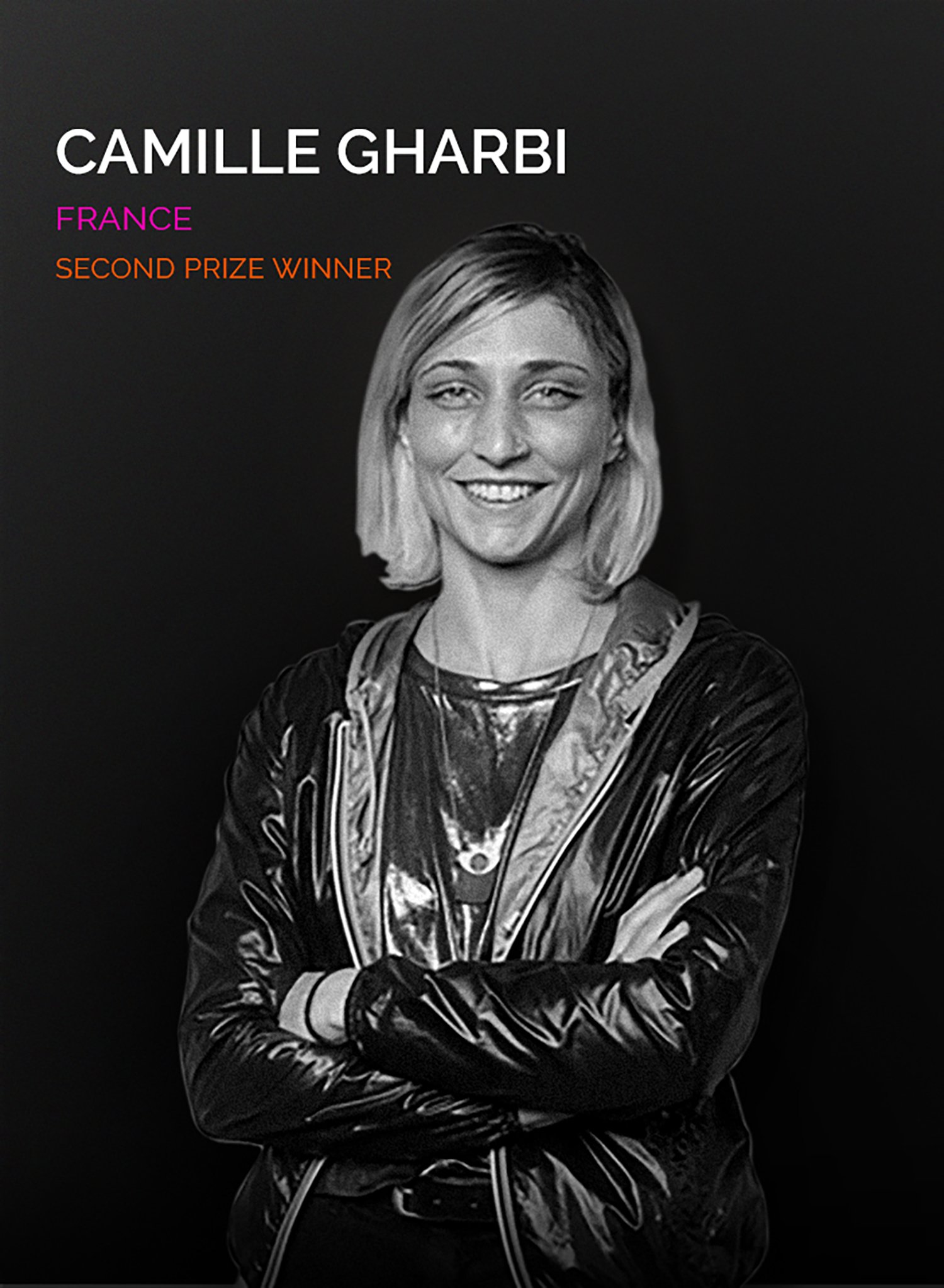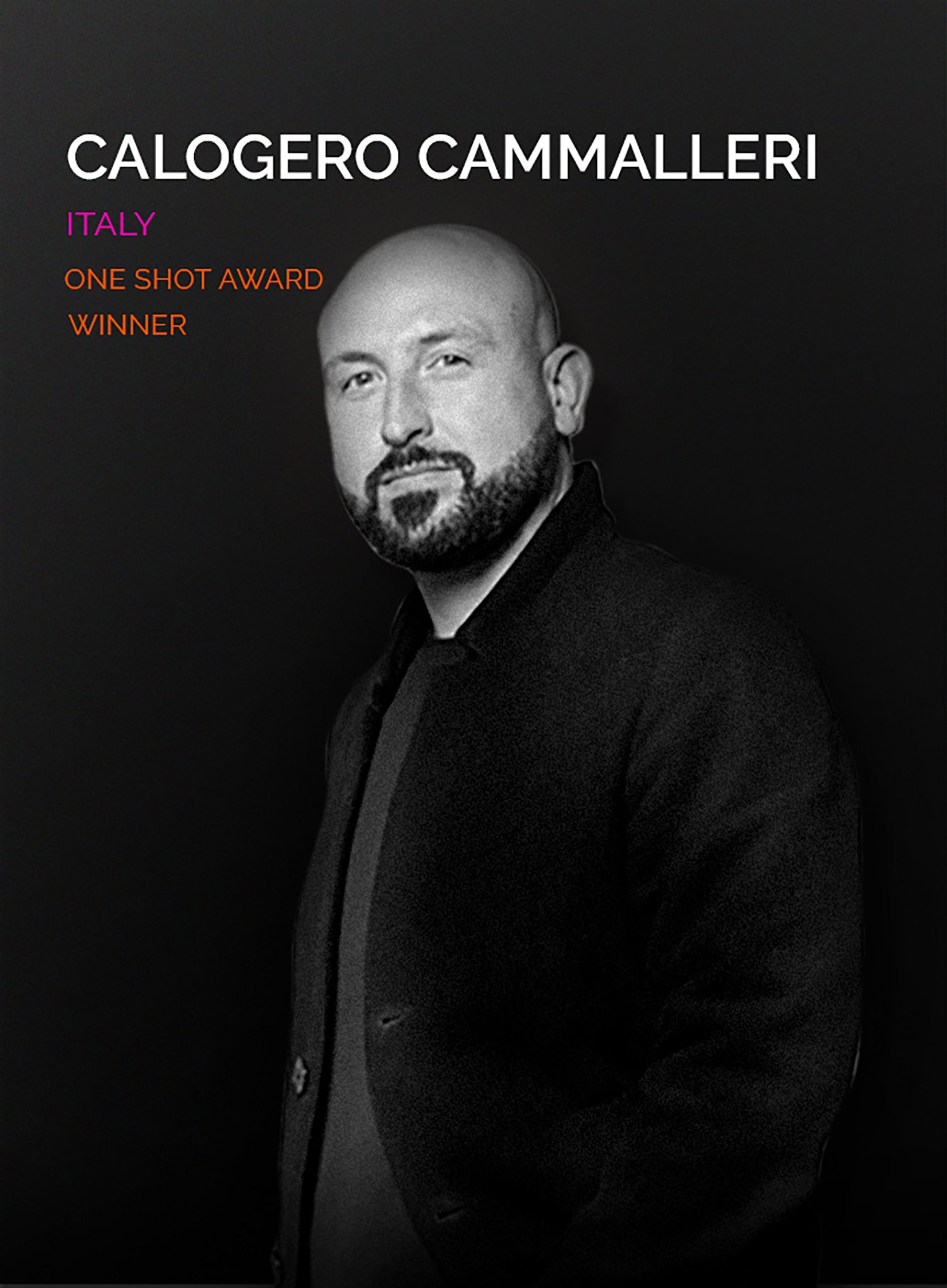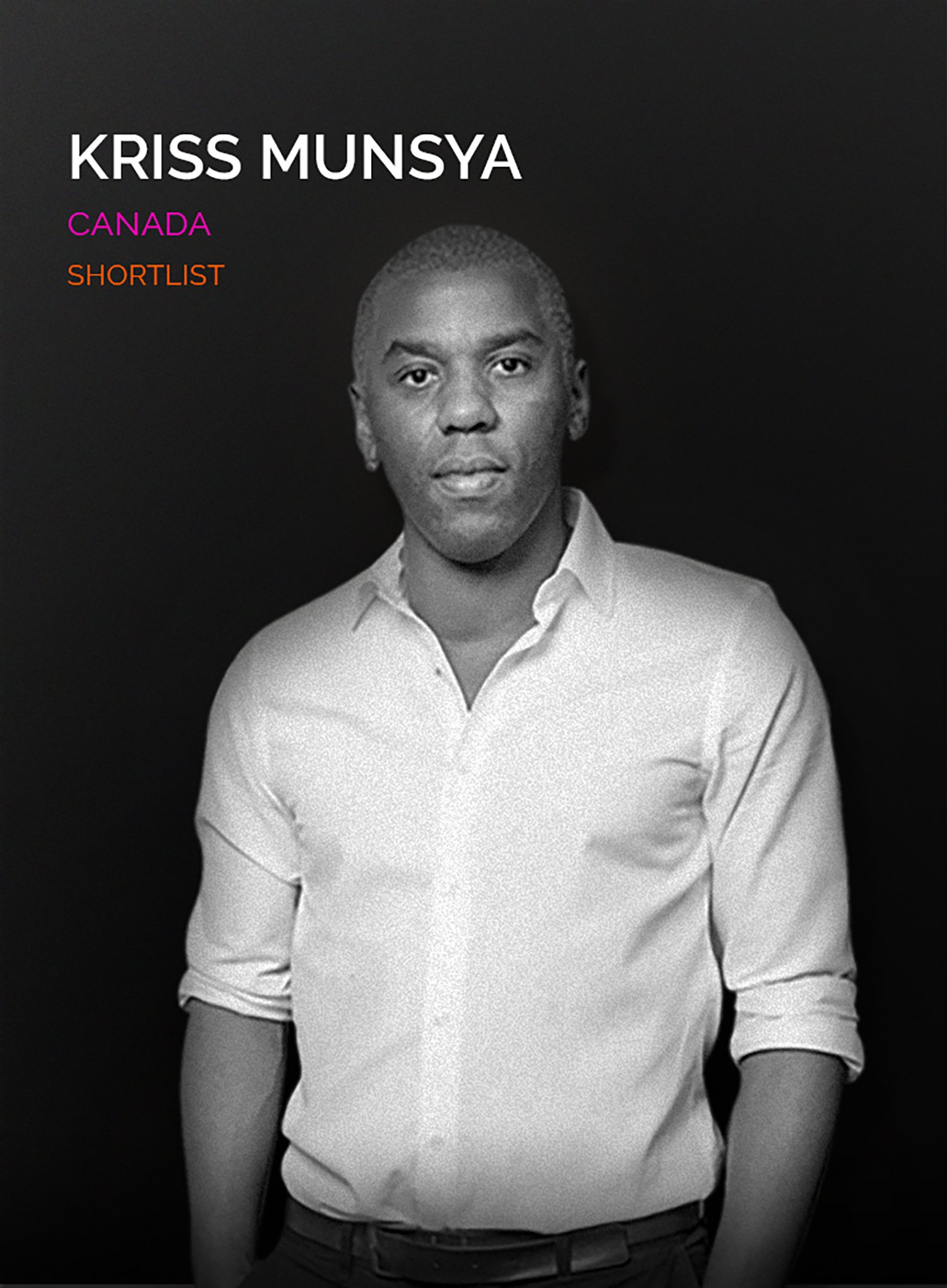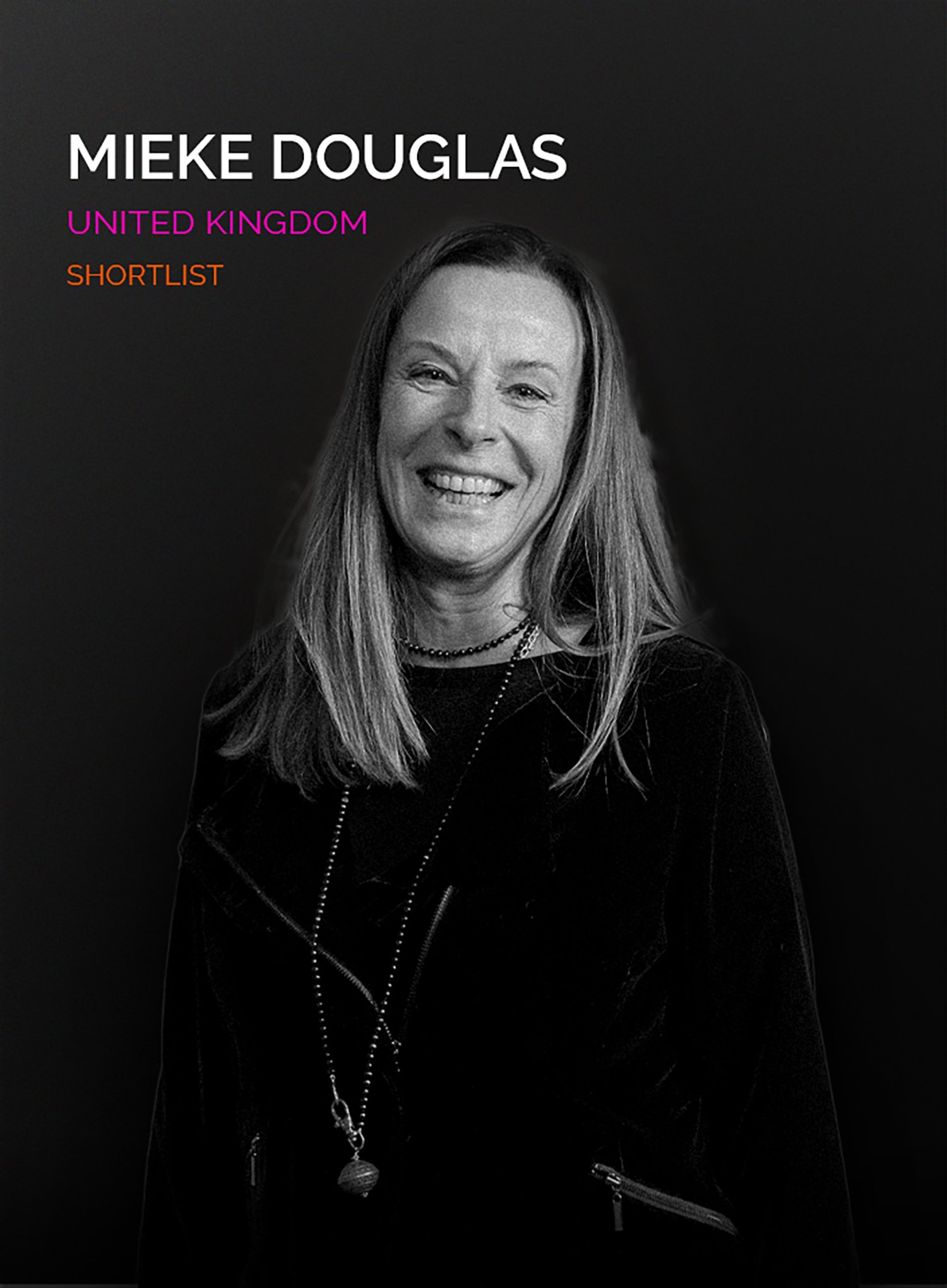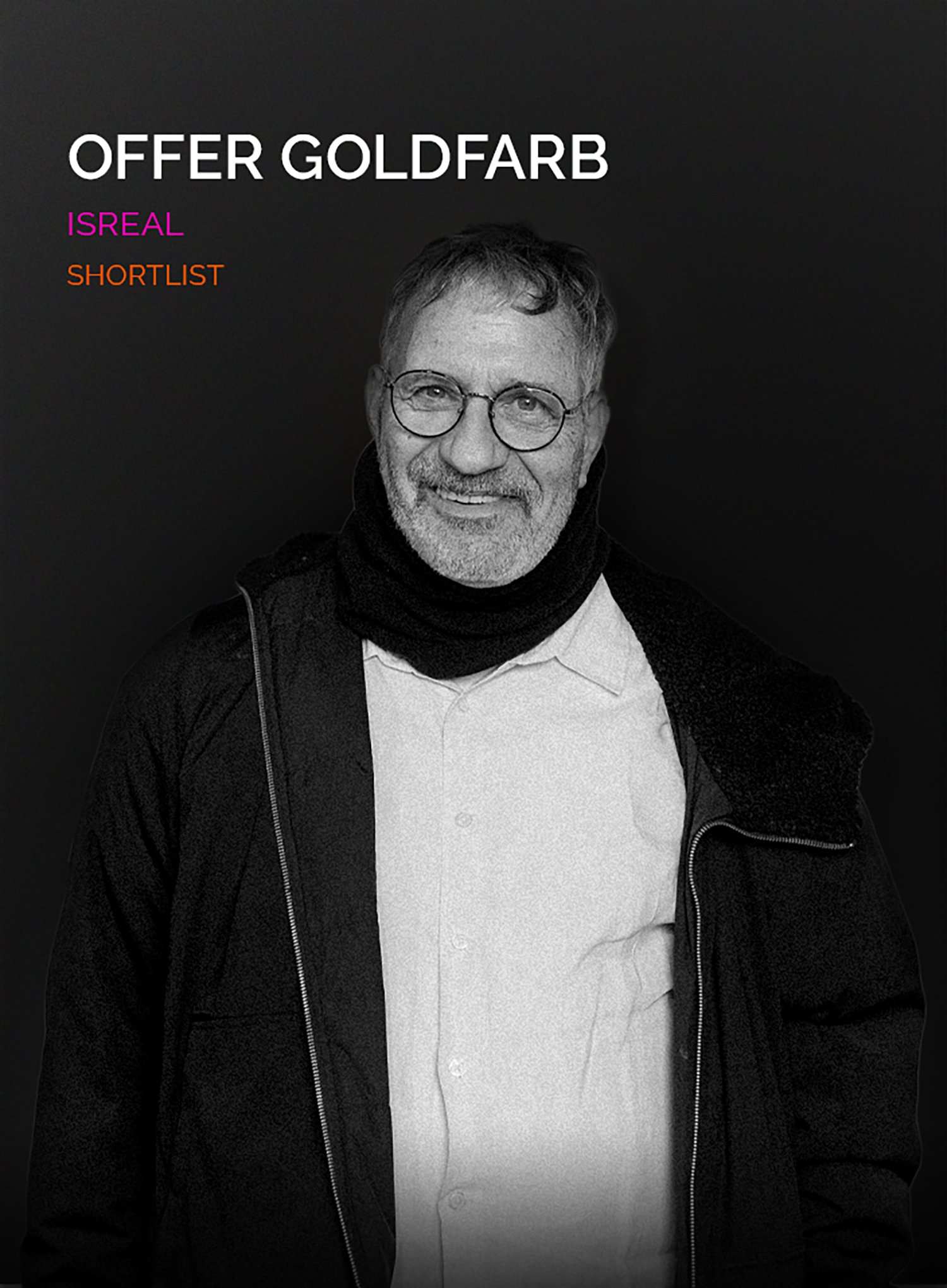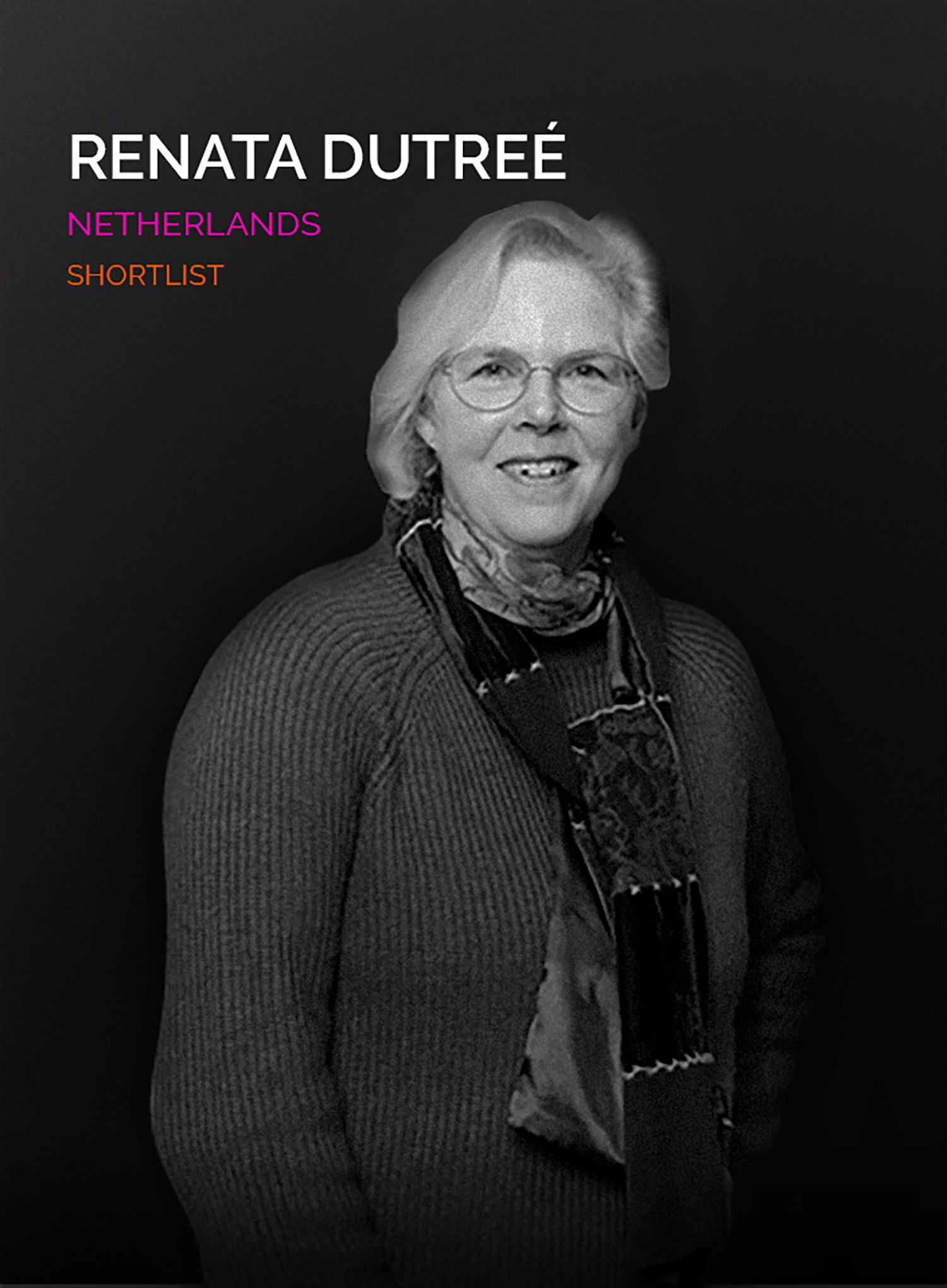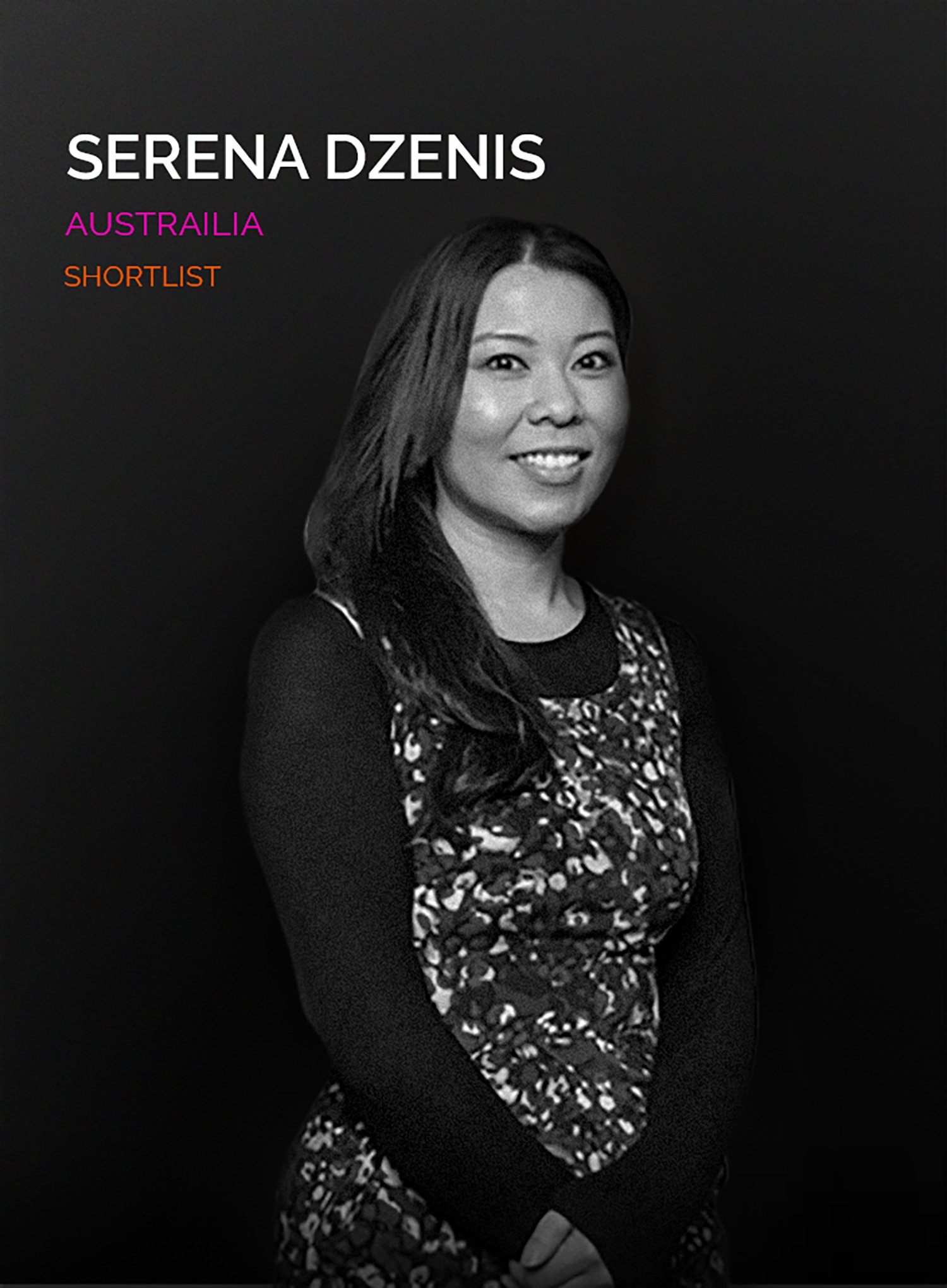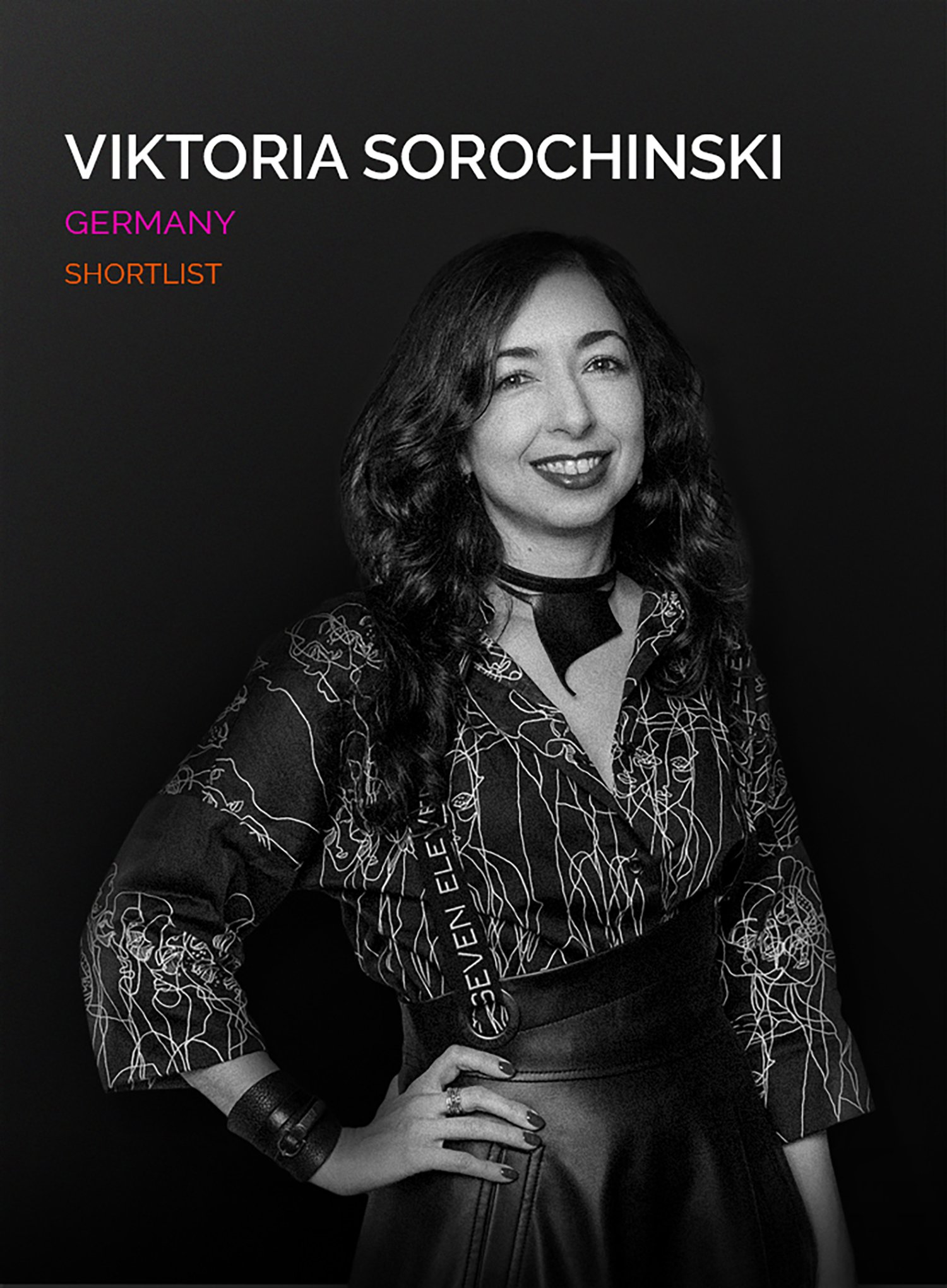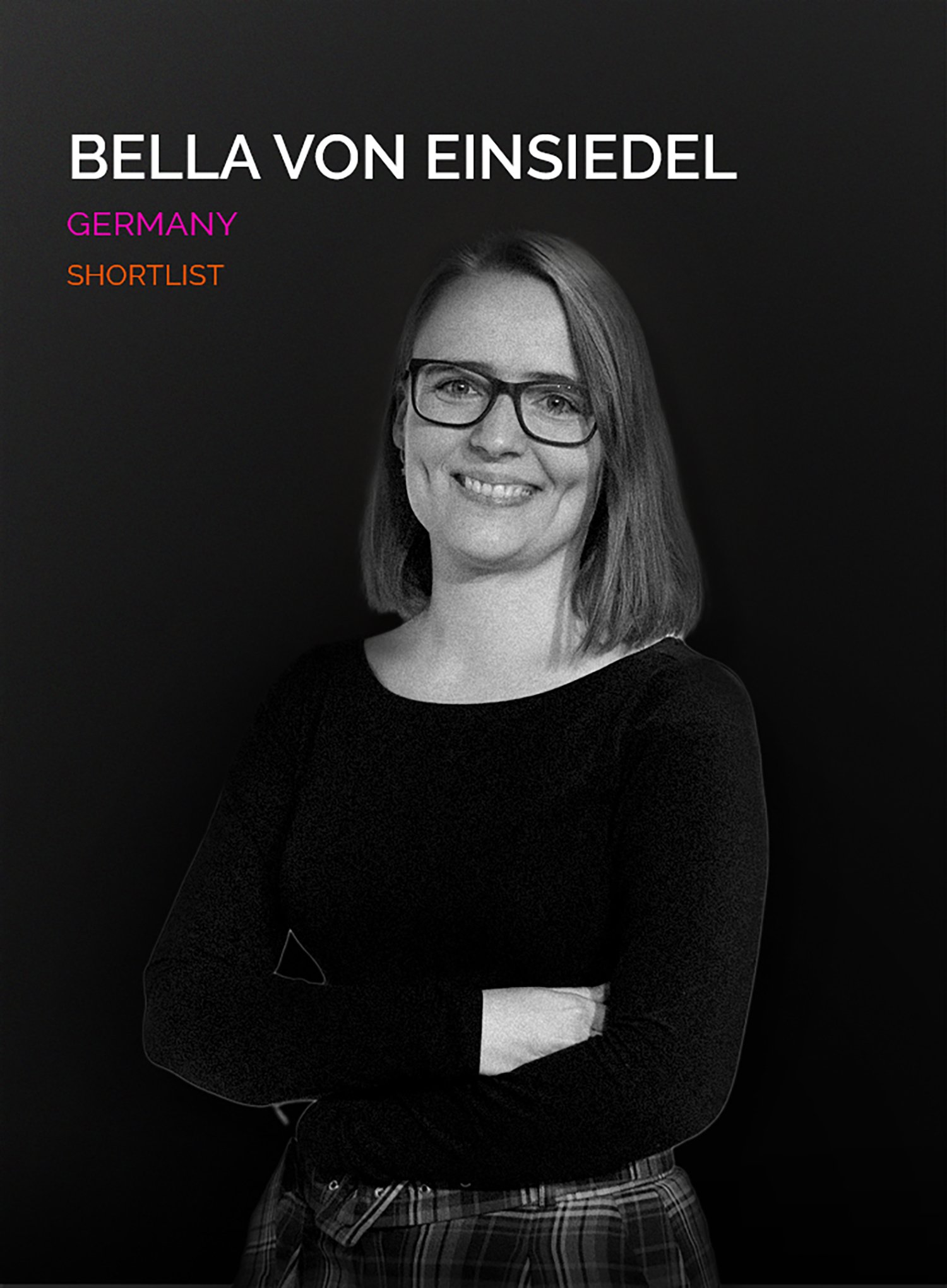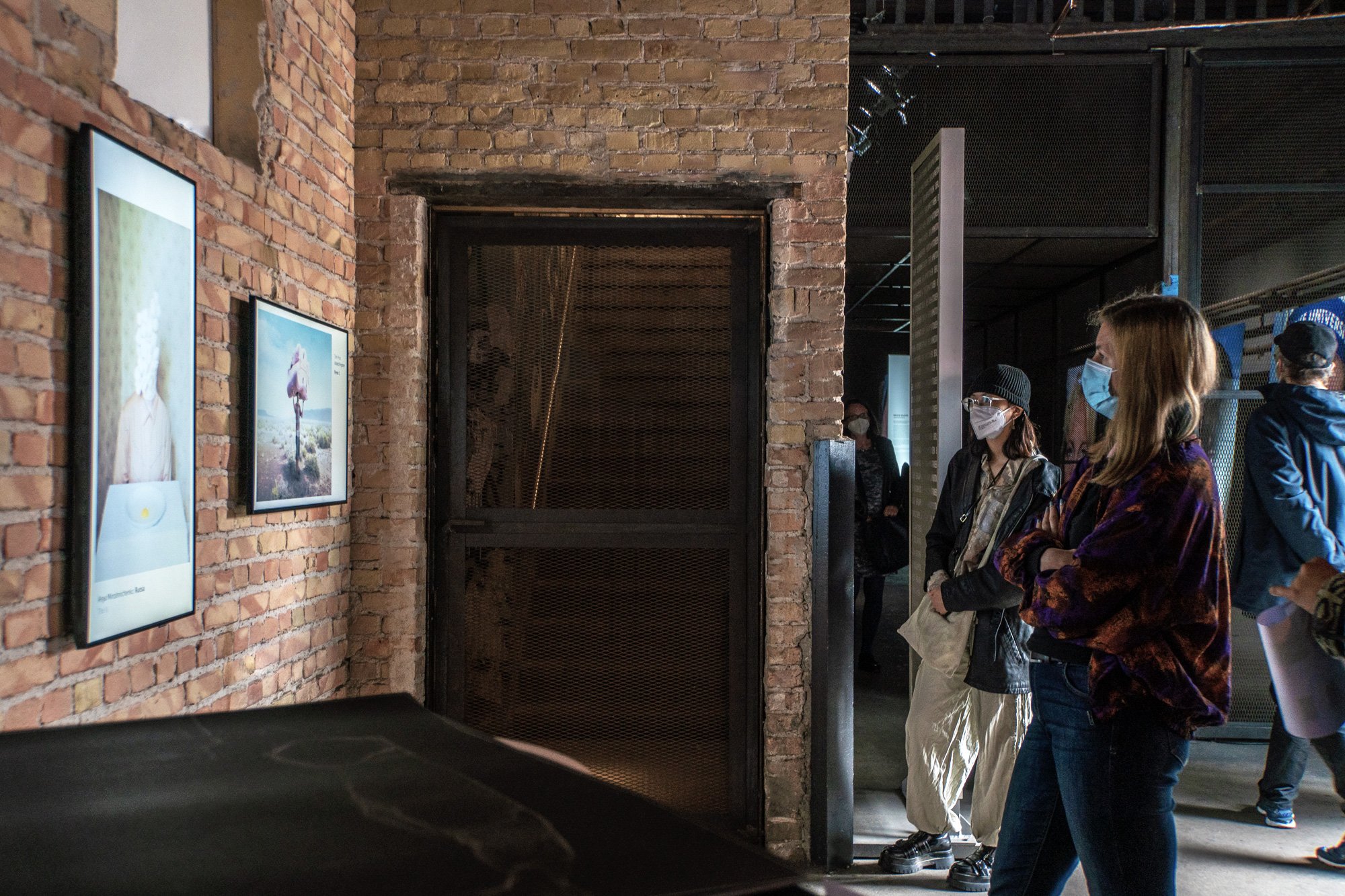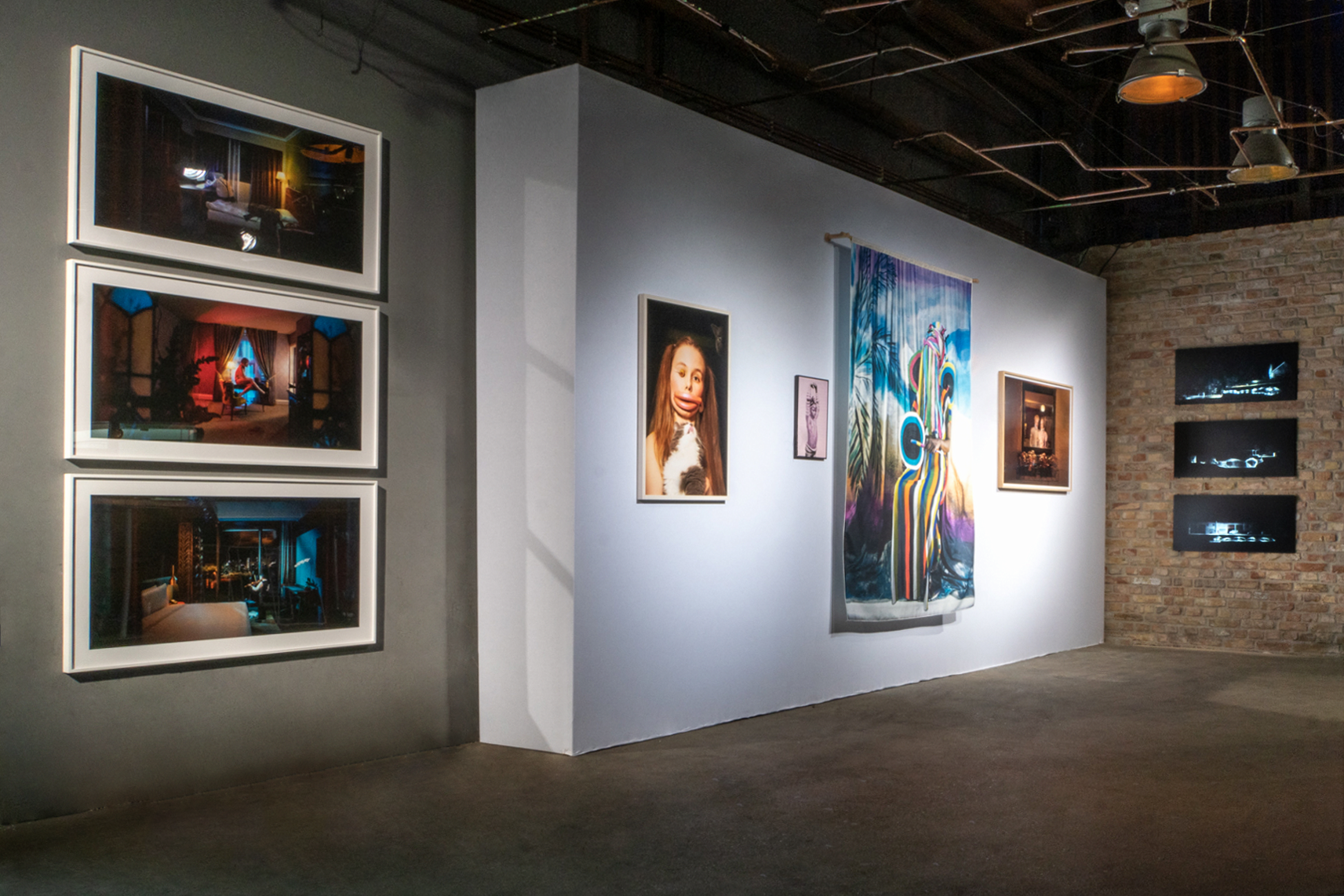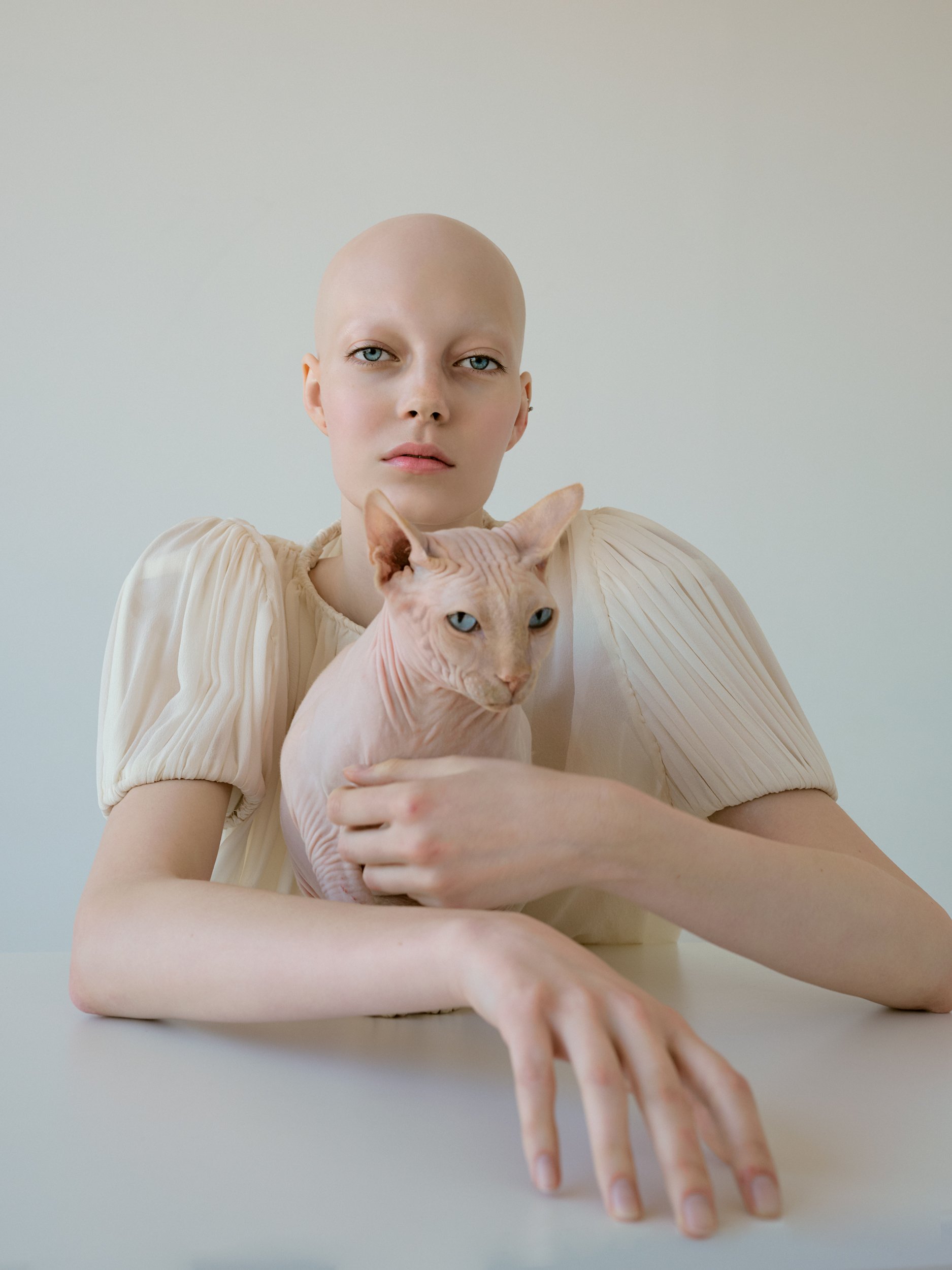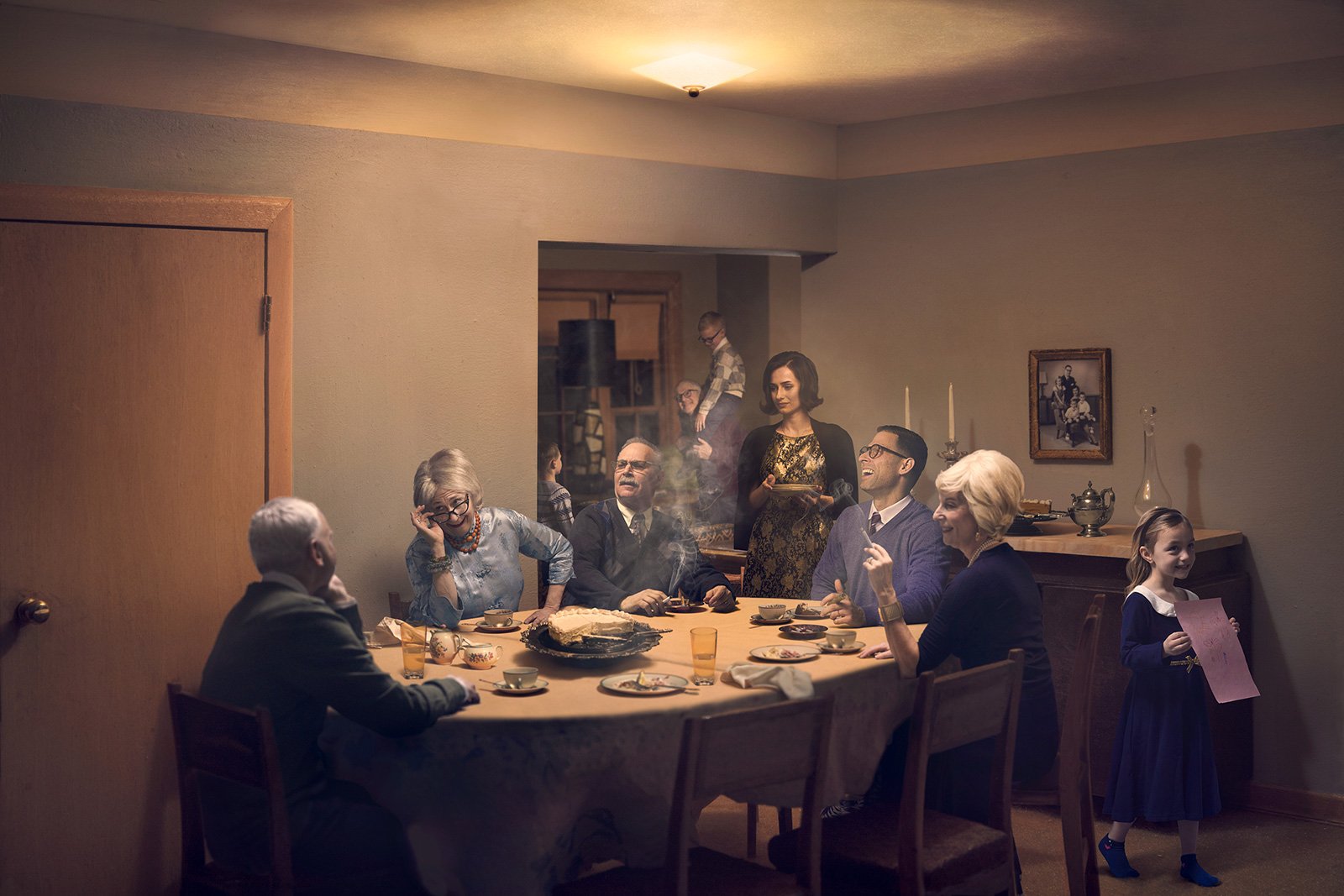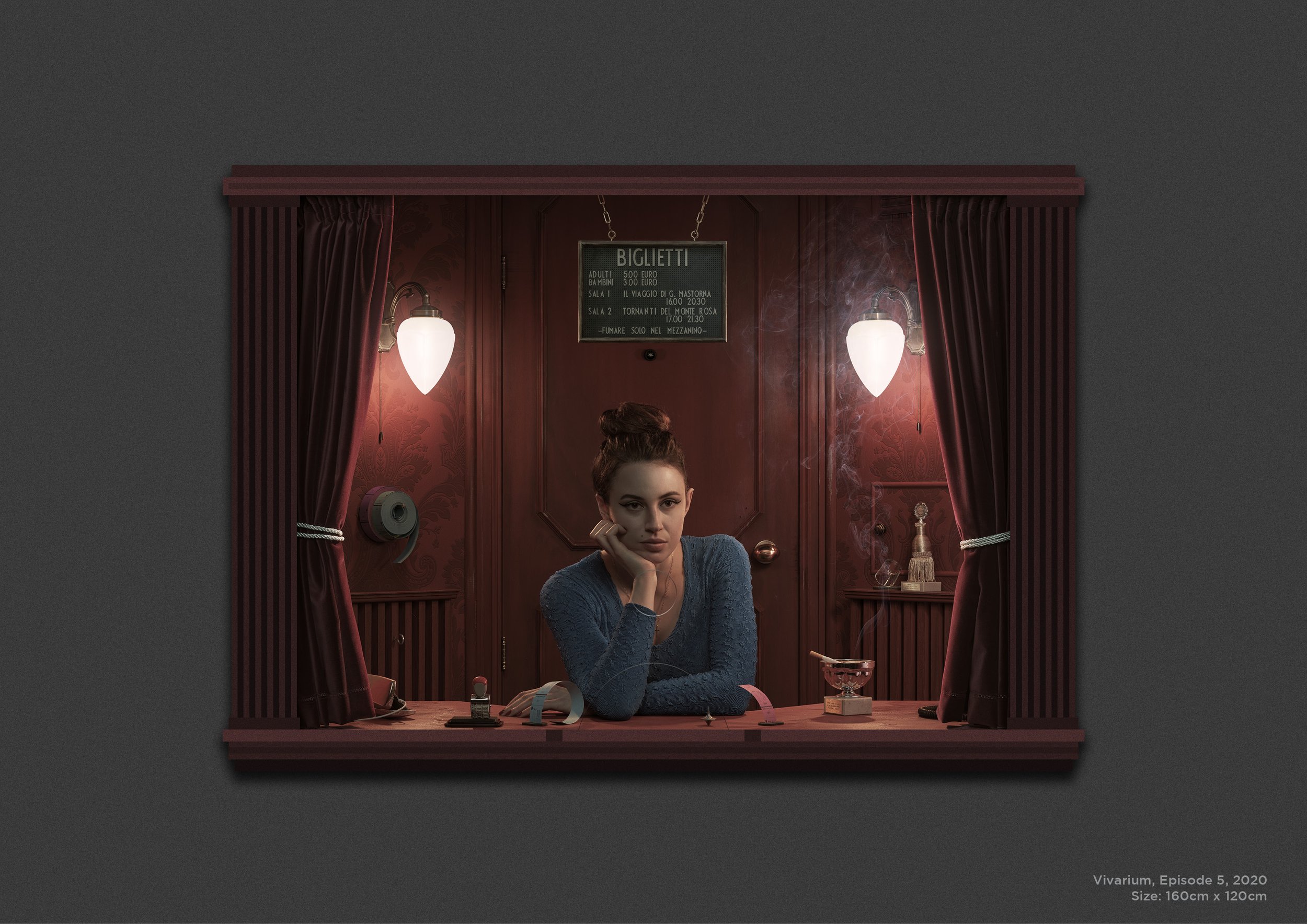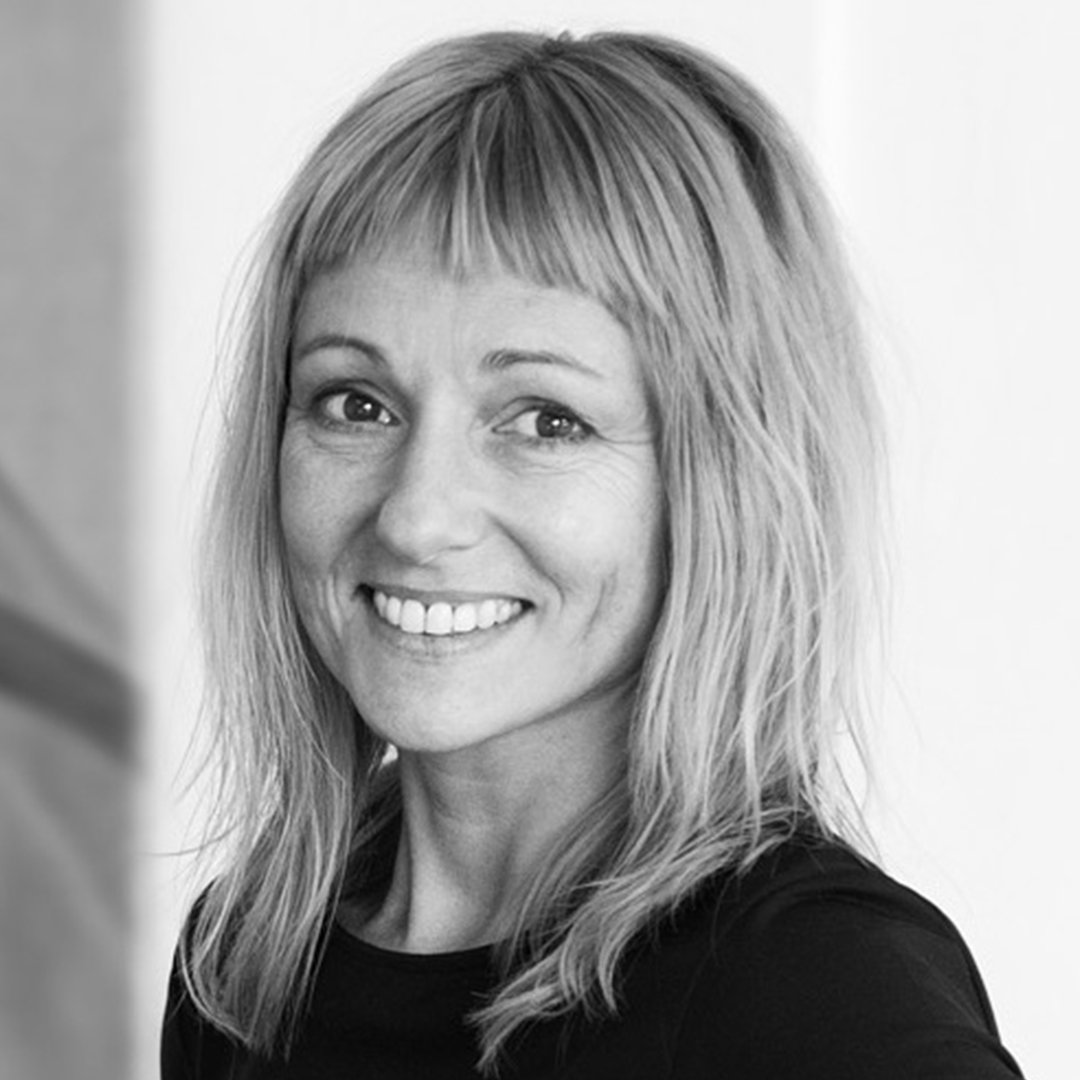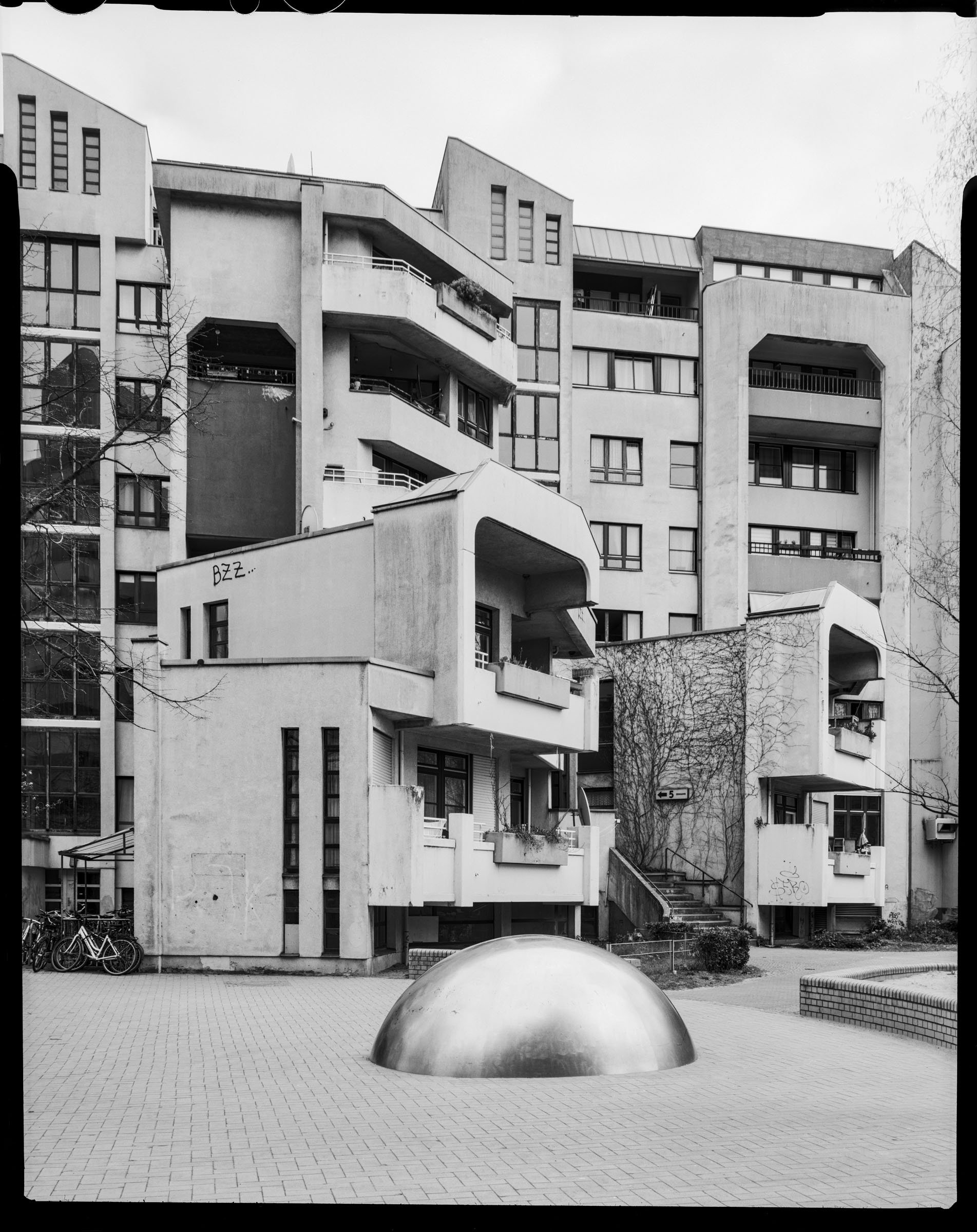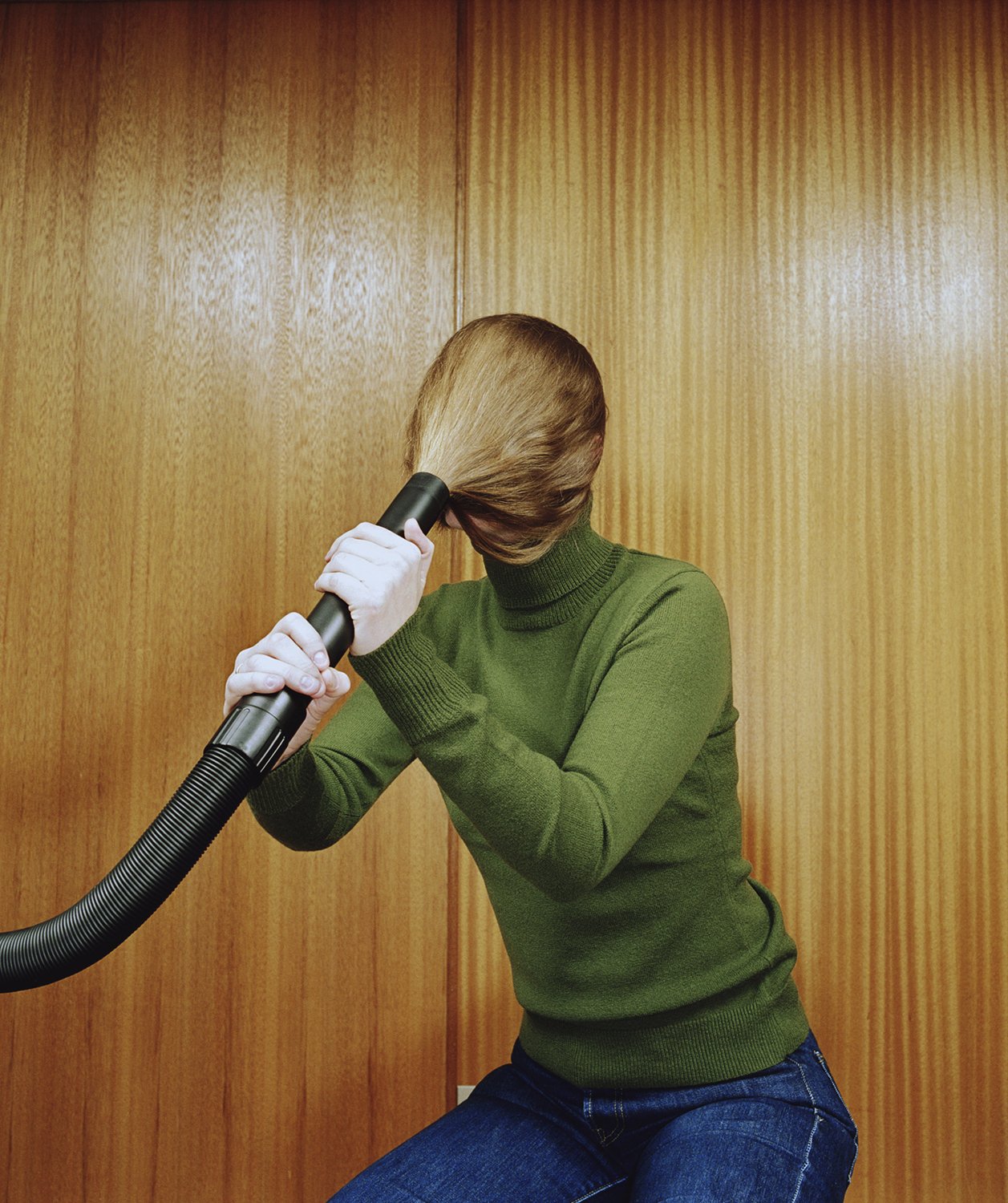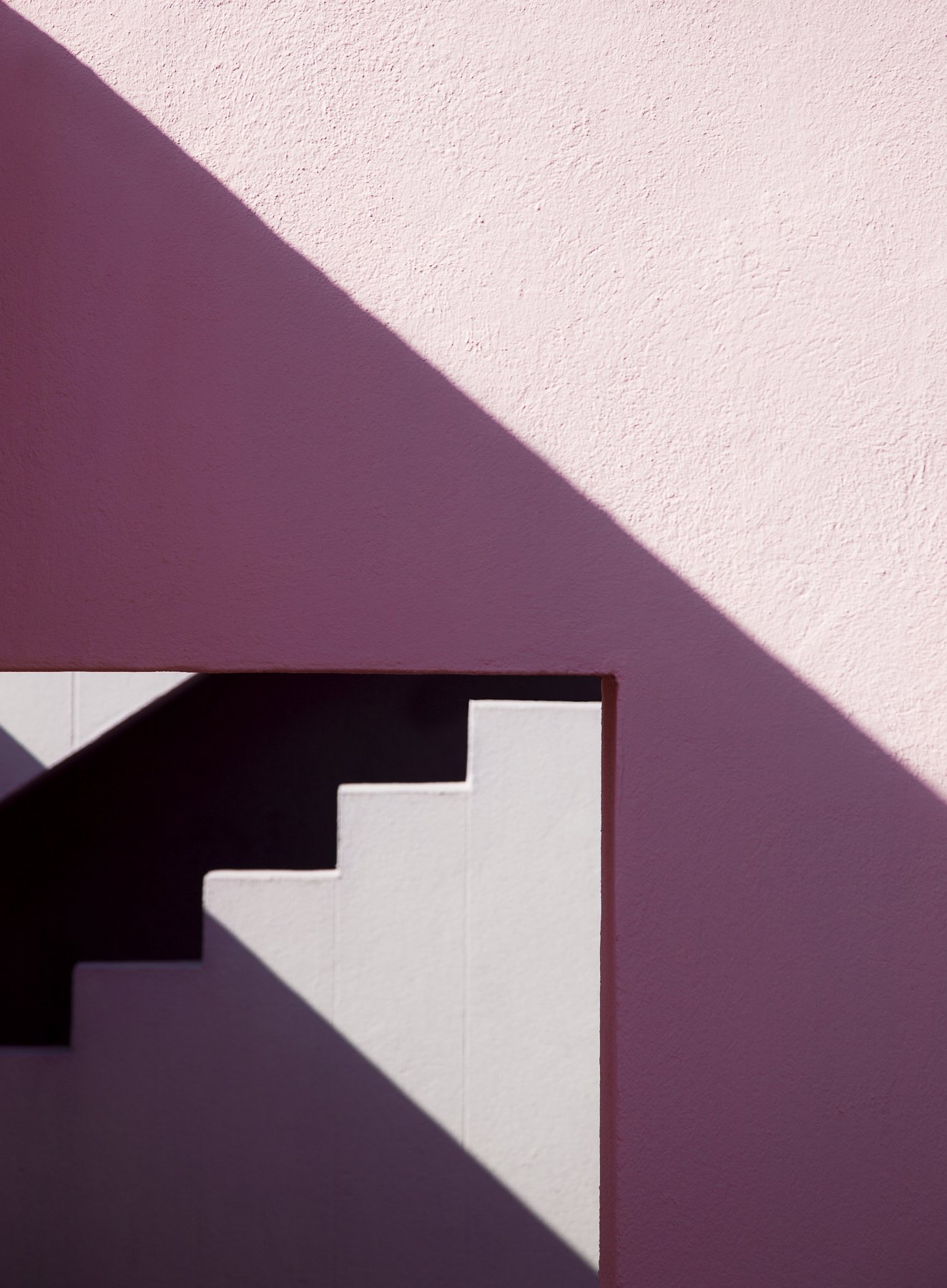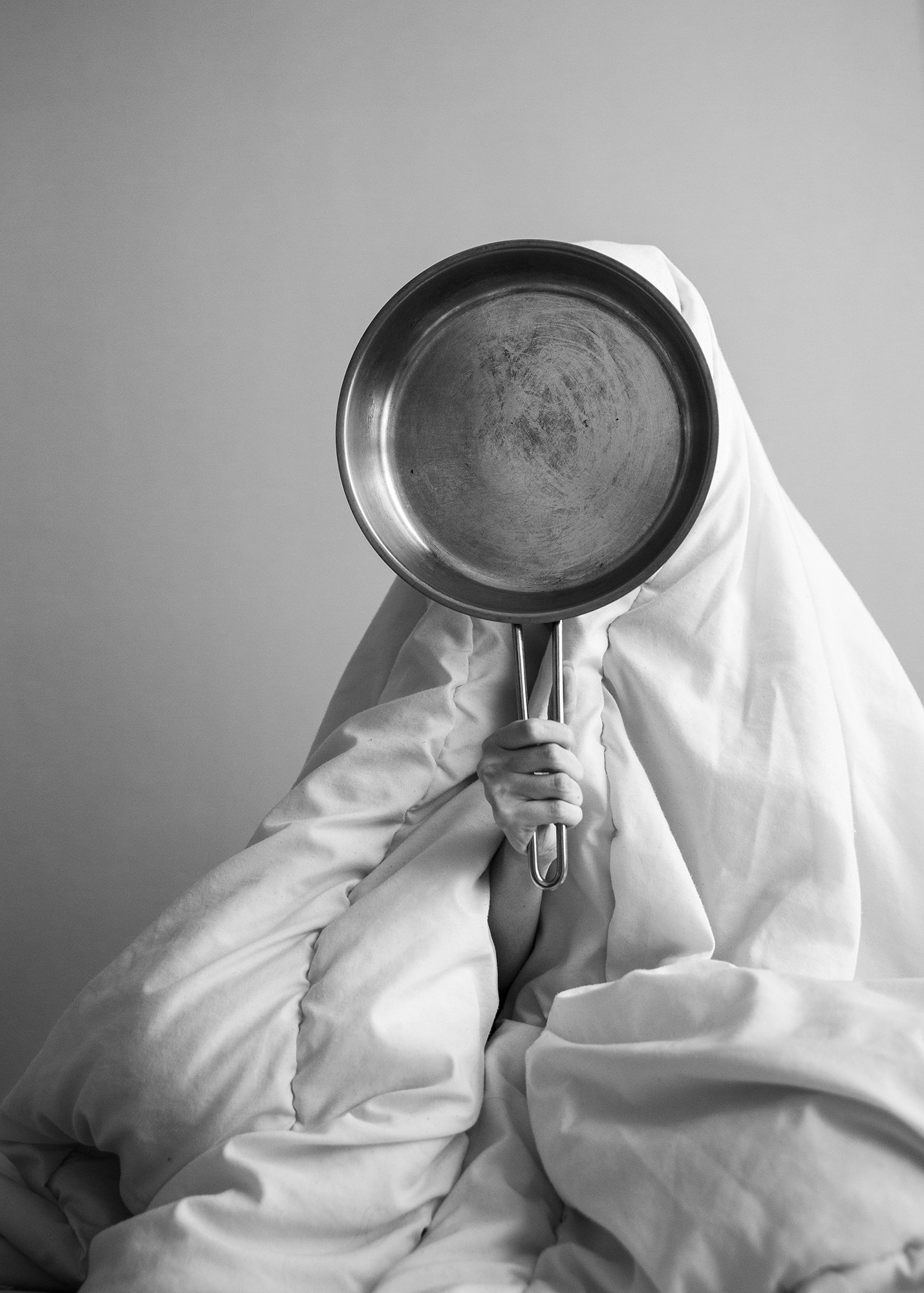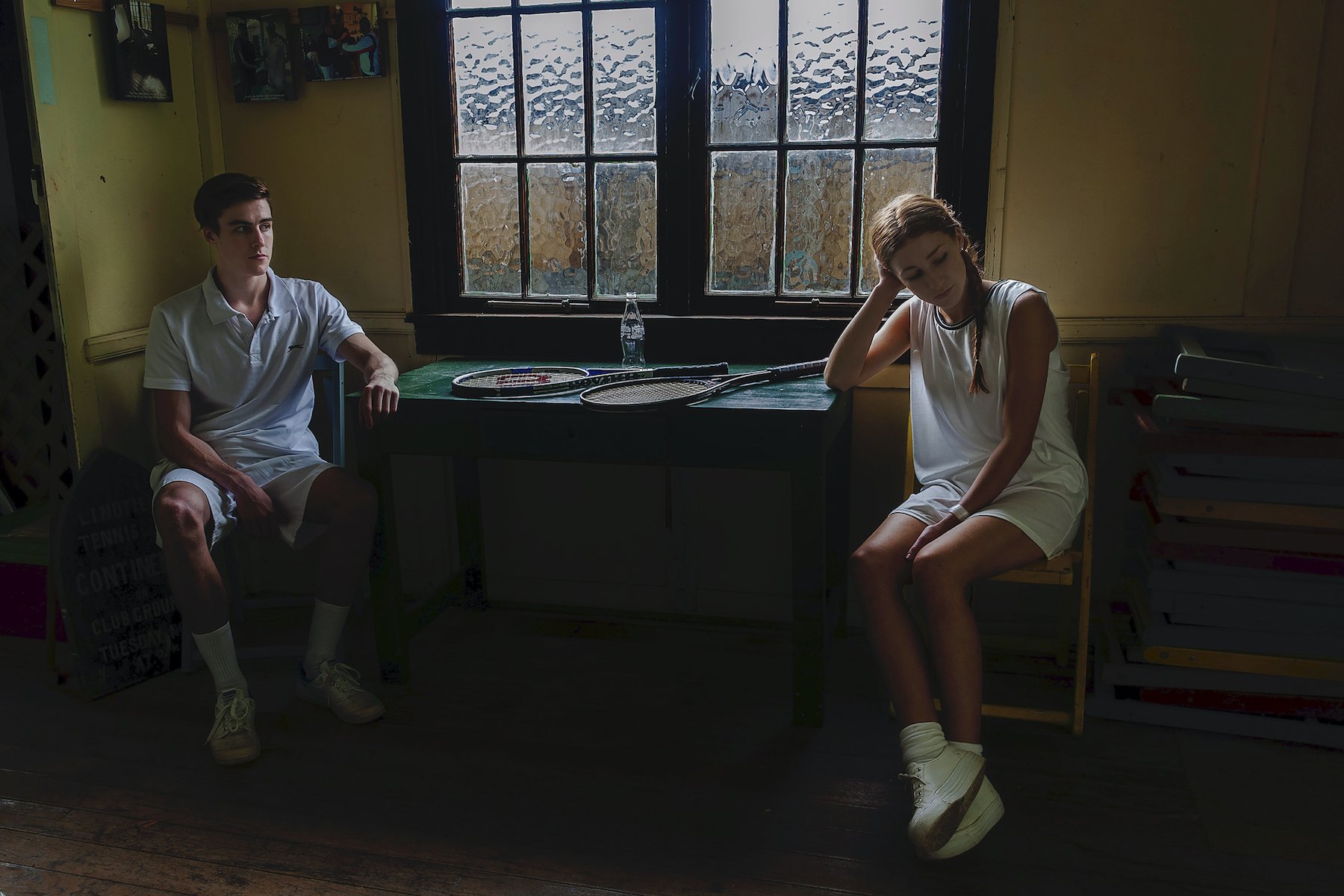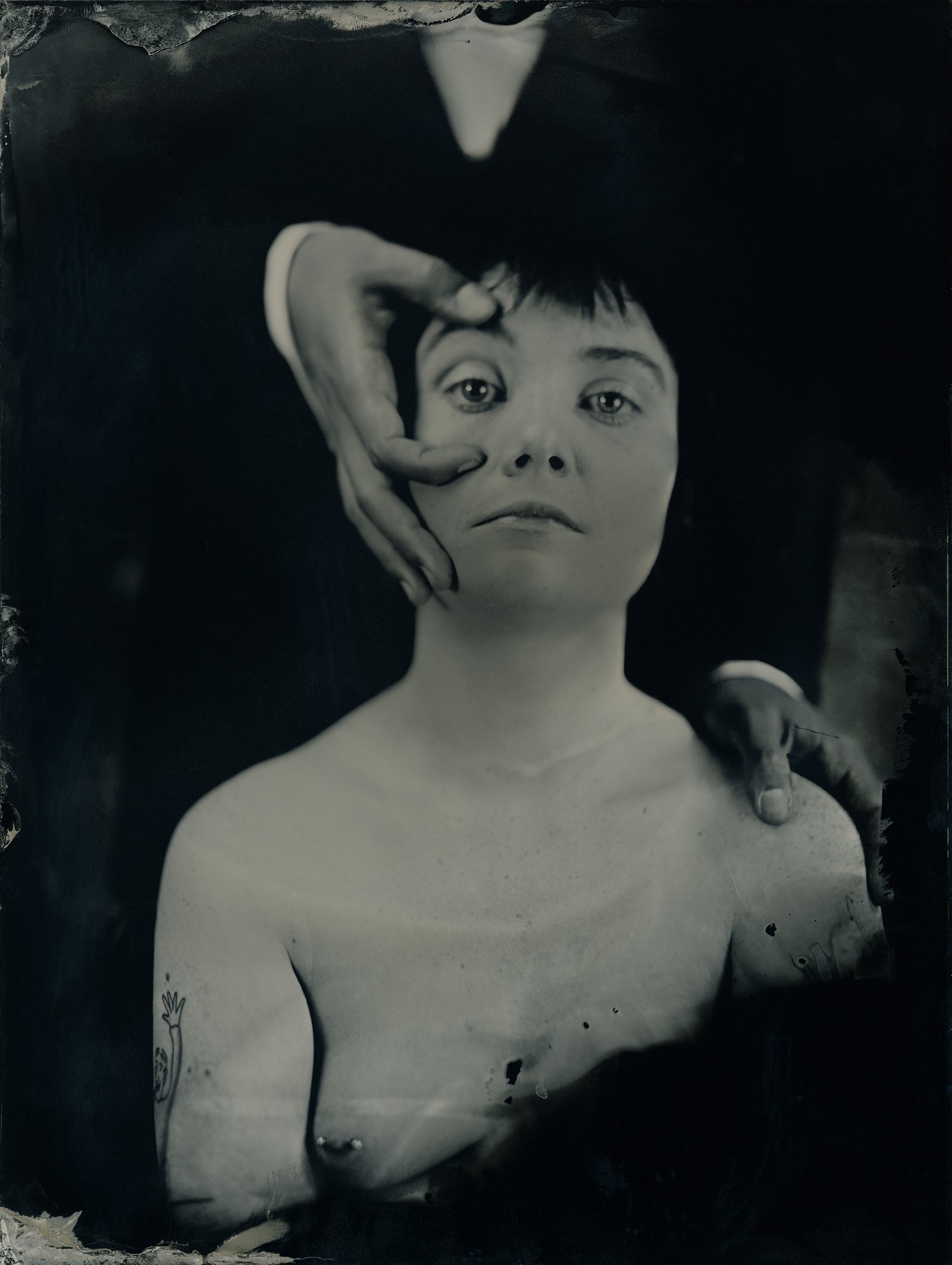BBA Photography Prize 2021
Exhibition location
Kühlhaus Berlin
Luckenwalder Straße 3, 10963 Berlin
26. Nov - 12. Dec 2021
Award winners
1st Prize: Jens Juul
2nd Prize: Camille Gharbi / Dirk Hardy
3rd Prize: Kristina Varaksina
People's Choice Award: Richard Tuschman
One Shot Award: Calogero Cammalleri
About the 2021 edition
Now in its 4th year, the BBA Photography Prize honours talented photographers. Together with an international jury, Berlin-based BBA Gallery has selected 24 photographers for the shortlist and 37 nominees for the One Shot Award, whose works can was seen in a joint exhibition in the Kühlhaus Berlin. The first prize winner Jens Juul will receive his solo exhibition in BBA Gallery in March 2023 during EMOP, the European Month of Photography.
Meet the photographers
The One Shot Award goes to Calogero Cammalleri, Italy, for a timeless black & white portrait. Richard Tuschman (USA) receives the People’s Choice Award (sponsored by DMB represents) for a meticulously staged series with which he portrays memories of his childhood and also honours his mother and his deceased wife. Kristina Varaksina (UK) receives the 3rd prize for her carefully designed portraits of women, which illuminate the female psyche and pose questions of beauty, self-perception and self-discovery. The 2nd prize is shared by Camille Gharbi (France) for her conceptual work ‘Proofs of love’ that addresses the topic of femicide and violence against women in the partnership, and Dirk Hardy (Netherlands), who creates detailed whimsical, life-size, fictional portraits in the form of contemporary tableaux vivants under the title ‘Vivarium'. And finally: The 1st prize goes to Jens Juul from Denmark for his black and white photo series ’Six degrees of Copenhagen’, which is located somewhere between documentation and artistic portraits and impresses due to its simultaneous harshness and vulnerability.
Photography exhibition at Berlin Photo Week
BBA had an exhibition at Berlin Photo Week where we showed selections of Pick of the Day and winners of the previous years.
Exhibition at the Aletto hotel
We were invited by Aletto hotel to exhibit a curated selection of the Photography Prize shortlist photographers. A paired back minimal exhibition that complimented the high quality stylish interior paired with the aesthetics of the photographic selects.
24 Shortlist photographers
-
In “The Last Resort” Kremer integrates typical urban and landscape scenes into a spatially and culturally different context. His aim is to illustrate the interaction between nature and the space claimed by humans, thereby alluding to current challenges such as climate change, rural exodus, exclusion or the clash of social orders. The supposed objectivity and neutrality of the distant motifs presented in the long shot is called into question by the sense of discomfort the sometimes surreal or dystopian-looking images create; the viewer can open up scope for interpretation in order to ascribe individual meaning.
Since its early days, artistic collage has been widely used to point out social or political grievances. Based on this tradition, Kremer uses the artistic process of digital photography and photo montage to create a dissonance between architecture, landscape and culture, like a proposal for a scenario of a more or less “fantastic”, temporally and spatially compressed, pictorial “reality”. In deceptive harmony, the resulting monumental visions present a closed, possibly existing world and leave the question of anticipated future or presence unanswered. They might stimulate reflection on the way we think of the world and our place in it today.
-
French photographer and former architect, Camille Gharbi is born in 1984 and lives in Pantin, France. She works in the fields of architectural photography, portraiture and photojournalism. She develops personal projects related to contemporary social issues such as migrations flux and women’s right. Her photographic approach, halfway between documentary and fine-art photography, seeks to question the state of the present world by playing with distance and aesthetics to induce empathy.
Her works have been featured in European and international photographic events such as the Festival Circulation(s) in Paris (France), the Night of the Year at Les Rencontres d’Arles (France), the Lens Culture Emerging Talent Exhibition in New York (USA), or the Arte Laguna Prize in Venice (Italy).Camille Gharbi is the winner of the Fidal Youth Photography Award 2018 with her series «Proofs of love», and the Lens Culture Emerging Talent Award 2018 with her series «A place to live».
«Proofs of love» questions domestic violence and our response to it through its most extreme expression : conjugal femicide. In France, one woman dies every three days under the assault of her partner or ex. Those «passional crimes» regularly punctuate the press. They happen so often that for a long time they were perceived as tragic but banal events, as if domestic violence was an endemic human phenomenon. However, some particularly dreadful details sometimes manage to raise awareness on the violence of those crimes : «Suddenly, the adorable grandpa kills his 90 years old wife with a cooking pan.» *The violence of the act is highlighted by the mention of such details. Murders of women in conjugal environments are not isolated events. The analysis of the 253 of women who were killed in such conditions in France, in 2016 and 2017, show that it is in fact a phenomenon which happens among couples of every age and profession. Those crimes happen too often to be considered as individual stories. They reveal a gendered violence that we have to start analysing.
-
Master’s in Journalism: S.I Newhouse School of Communications, Syracuse University, 2000
B.S. in Economics: Allegheny College, 1986
Catherine Panebianco was born in Canada and currently lives in Jamestown NY. Panebianco is an artist whose work consistently longs for a sense of place, catches hold of memories and chases the spirits of those we currently love, and those that continue surround us from our past. Her work explores how we connect with others, with our past, and with ourselves.
Panebianco received the 2020 LensCulture Critics Choice Top Ten Award, 2020 CENTER’s Project Launch Award and was a 2019 Photolucida’s Critical Mass Top 50 for her series, NoMemory is Ever Alone. She is a semi-finalist for the National Portrait Gallery’s 2021 Outwin Boochever Portrait Competition. The series was exhibited at the 2021 Cortona on the Move and the2021 Imago Lisboa Festival, shortlisted & highly commended for the 2021 Belfast Photo Festival, a finalist for The Hopper Prize,1st place winner in the International Photography Award for Fine Art, a finalist for the National Photography Award for the Texas Photographic Society and a San Francisco Bay International Photography Competition Portfolio Award. Panebianco’s work has been exhibited in the U.S. and internationally and she has been featured in Oxford American, Black + WhiteMagazine, The Guardian, la Repubblica and Lenscratch.
-
BFA Photography, Art Center College of Design, Pasadena, CA, 1981-1984
Hugh Kretschmer grew up in Los Angeles, and one of seven children in a family of artists. At the age of 13, he was introduced to photography by his father who was a photo-instrumentation engineer for MacDonnell Douglas from the Mercury through Apollo missions. Ten years later, Hugh received a Bachelor of Fine Arts Degree from Art Center College of Design, graduating with honors. He then moved to New York City to start his career, collaborating with editorial, design, and advertising clients such as Vanity Fair, New York Times Magazine, National Geographic, GQ, Penn & Teller, Old Spice, Huggies, Toyota, and Sony. His images have been recognized by The International Photography Awards, American Photography, Communication Arts, PDN Photo Annual, Graphis Publications, and the Society of Publication Designers. His work has been profiled in many industry publications, books, podcasts and blogs, including Graphics, Communication Arts, Juxtapoz, Plastik, Vision Magazine, Beijing. His work has been selected for auction through Sotheby’s, Vienna and exhibited in galleries in Los Angeles, New York and Paris, and is in permanent collection of the 911 Memorial, New York City. His first retrospective came in 2021, at the Hoban Artrium Museum, Gwangmyeong-si, South Korea.
Hugh has lectured and lead workshops at Eddie Adams Workshops in Jeffersonville, NY, Gulf Photo Plus, Dubai and Fotorama, Serbia. He teaches photography part-time at Art Center College of Design, UCLA, and the Los Angeles Center of Photography.
-
The Eraser juxtaposes experiences of the past with desires of the future. It is a story of change and transformation that centers a Black man revisiting experiences that have been normalized in critical reflection of internalized supremacy. Things that at the time he thought were normal now have new meaning and he wants to share the lessons within. Born in DRC in the 80’s and raised in Brussels, he was confronted with his “differences” early on. The discrimination and violence he experienced in childhood left a mark - one that grew to obfuscate his sense of self-worth. The internalization of these experiences disoriented him in search of self-preservation. It took him years to acknowledge how this distanced him from his loved ones, community, and Self [sic]. He took refuge in the distance. Safety was his priority. In his adulthood, his memories are calling on him to clarify his worth and reorient his efforts toward justice. He wants to get back to those he’d distanced himself from. With The Eraser, he aims to translate his experiences into invitations to reflect on the impacts of supremacy. As the protagonist revisits memories to reimagine his past, he tries to erase the dominance of whiteness by transposing Blackness. However, memory is not easy to manipulate! Digging into the past always brings up unexpected things. With that, it imagines creative reclamations of space.
-
Offer Goldfarb is an autodidact photographer who lives and works in Israel. As he has a twin brother, he is always interested in identity questions and in the borders between him and others. He creates works of art in order to find or create his inner voice. Although he always uses cameras as the basis for his works, he is usually not satisfied with reality, so his works are seldom simple documentations. In this series, the houses stand for identity. He created imaginary different houses in imaginary different places, as if one has problems in one place, he can escape to another house in a better place. The little imaginary white houses, that resemble children’s drawings, express his faded memories of the house where he was born. He introduced people in his series, to explore the concept of identity—the boundaries that separate us from one another, and the bonds that tie us together. The plastic tapes in his works stand for bond and healing, but also stand for disturbance. His style is the encounters and assimilations of influences of artists of various media and genres. (e.g.; Hockney, Reisman, Alberto Campo Baeza). This is in line with his interest in the borders between him and others. While his colours are harmonic and reflect a yearning for carefree attitude toward life, his content is a bit disturbing. By creating conflict between form and content, he tried to express unrest, discomfort and continuous search for identity, in a chaotic world.
-
Viktoria Sorochinski a Ukrainian-born Canadian artist photographer, currently living and working in Berlin, Germany. Since completing her Masters of Fine Arts degree at New York University (NYU) in 2008, she has had over 75 exhibitions in 23 different countries throughout Europe, North and South America, and Asia. Sorochinski’s work is featured and reviewed in over 85 international publications including her monograph “Anna & Eve” published by Peperoni Books in Germany. She is also a laureate of over 40 international awards, fellowships and grants among which are Arnold Newman Prize, Leica Oskar Barnack Award, LensCulture Exposure Award, Lucie Award, Magenta Flash Forward, PDN Photo Annual and Voies Off Arles Award.
“Tete-a-Tete”, 2020 is one of the most recent projects by Viktoria Sorochinski, created during the first COVID lockdown in Berlin - Germany. “Tête-à-Tête” is an expression borrowed from French that translates literally as “face to face” and usually refers to an intimate encounter between two people or a very private / confidential conversation. This self-portrait series is a “one-person theater” portraying a journey into Viktoria Sorochinski’s subconscious, where she is metaphorically facing her own self while allowing others a glimpse into her inner world. Viktoria is exploring her childhood memories, dreams, fears, and fantasies with a somewhat humorous approach. The symbols with which she is playing have a deep personal meaning for her. However, they are also drawn from the “collective wisdom” and the universal symbols that people from various cultures can relate to, even if they would mean something different to them.
-
Born 1966 in Weimar, Andreas Rost is an internationally reputed German photographer and curator. He is a photographer whose work lies on the border between documentary and art photography. Biography: 1984/85 apprenticed in photography in Dresden; 1988–1993 studied photography at the Leipzig Academy of Visual Arts; Degree in photography under Evelyn Richter and Arno Fischer; 1991 Assistant to Thomas Höpker (Magnum); since 1994 freelance photographer and curator; since 2006 ifa- Representative for Photography / Institut fürAuslandsbeziehungen; lives and works in Berlin.
Grants and prizes (selection): 2017 and 2021 Berlin Research Fellowship; 2016 ifa travel grant, Tehran; 2013 Artist Residency, Goethe Institute Algiers; 2000 nominated for the Dorothea von Stetten-Award, Kunstmuseum Bonn; 1995 and 2017 AenneBiermann Prize for Contemporary German Photography, Gera; 1994 StiftungKulturfonds, Berlin
Architectural study sheets
Social upheavals and their visible consequences have been the basic theme of all my artistic work since 1989. I am interested in artistic research that looks for causes, considers what is at stake and discovers future possibilities in the now. Cities always show the shadows of past crises. The pandemic will change the appearance of the metropolises. At this point in time, it is not yet possible to determine how fast and in which direction these transformations will proceed, whether they will create new structures or only exacerbate existing conditions. The need to retreat into the private sphere associated with lockdown phases makes the examination of questions about the conditions of living and working seem more topical than ever. The work is a conceptual image/text combination.
-
Masters of Art History: MA, University of California, Berkeley, CA, 1993-1997
BA Art History: Magna Cum Laude, Harvard University, Cambridge, MA, 1986-1990
Diana Cheren Nygren is a fine art photographer from Boston, Massachusetts. Her work explores the visual character of place defined through physical environment and weather. Place has implications for our experience of the world, and reveals hints about the culture around it. Her photographs address serious social questions through a blend of documentary practice, invention, and humor. Diana was trained as an art historian with a focus on modern and contemporary art, and the relationship of artistic production to its socio-political context. Her emphasis on careful composition in her photographic work, as well as her subject matter, reflects this training. Her work as a photographer is the culmination of a life-long investment in the power of art and visual culture to shape and influence social change.
The images in Diana’s series “The Persistence of Family” are composites of her old family photographs, photographs she took of her children as they grew, and the New England landscapes in which both she and they grew up. With these images, generations reach for each other across time. They are driven by a longing for connection. Though rooted in personal narratives, the pictures address a universal experience. They interrogate the way in which our family relationships and history play a role in shaping our sense of ourselves and our place in the world. They suggest that perhaps the present, in each of us, contains both the past and the future. Ultimately, “The Persistence of Family” portrays the layered process of becoming, and the complex interweaving of time, place, and identity.
-
Photographer: Copenhagen’s Technical College, Copenhagen, Denmark, 2012
In place of the traditional word attach the word “portrayal.” From a semantics perspective it may seem a subtle nuance, but in truth, Juul’s photography ‘portrait’ to describe his black & white photographs of anonymous strangers, Jens Juul prefers to is a collective visual statement ‘portraying’ the human condition intertwined at its most vulnerable points of truth. Blunt, almost savage, in their revelations and vulnerability, Juul’s images blur the lines between documentary, environmental portraiture, and fine art references.
Trained as a painter at Billedskolen in Copenhagen and New York Arts Students League, as well as being trained as portrait painter by the Spanish artist Artero Wiismundo, Juul transitioned from painting to pursue formal photographic training at Copenhagen’s Technical College where he graduated from in 2012. Due to this education he acquired a range of technical skills that are important when you work with a camera and all the related equipment modern photography offers. But he realized it was going to take a different set of skills if he was to accomplish portraying.
“Making a good portrait is not about having the right equipment; it’s about having the right attitude. It’s 98% psychology and 2% artistic skills. What makes me able to take the pictures that I do is not so much the equipment I bring, but my ability – and desire! – to speak, ask questions, and do a lot of listening.”
-
MFA Photography: Honors Degree, Academy of Art University, San Francisco, CA, USA, 2013
MA Graphic Design: Distinction, Ural State University of Arts and Architecture, Yekaterinburg, Russia, 2005
BA Architecture and Interior Design: Distinction, Ural State University of Arts and Architecture, Yekaterinburg, Russia, 2003
Russian-born Kristina Varaksina moved to the USA in 2010 to get her Master’s in Photography. She currently lives and works in London. Varaksina’s work is a creative response to what’s going on in the world and in her immediate environment. Through visual symbolism, carefully curated colour palettes and cinematic lighting she reflects the strongest emotions she and her subjects experience.
Varaksina looks through the prism of her own experience growing up in Russia, where, at a time of political and economic restructuring, women’s beauty became a commodity. Her work is an exploration of the psyche of women and the issues of self-perception and self-discovery. With her portraits Varaksina gives voice to women from different ethnic, socio-economic, and cultural backgrounds. Each portrait is an observation and a contemplation. An attempt to outwardly express an internal narrative, to amplify the voice of the subject.
Some of the recent awards include: LensCulture Portrait Awards, Equal Lens, Portrait of Britain, British Journal of Photography ‘Portrait of Humanity’, the AOP Awards, and the International Photography Awards. Varaksina’s work has been exhibited at Photo London 2021 and featured by the BBC and Deutsche Welle.
-
BA photography: Fotoacademie, Amsterdam, The Netherlands, 2015-2019
Dermatology Resident, Erasmus University, Rotterdam, The Netherlands, 1988-1992
Med school: Erasmus University, Rotterdam, The Netherlands, 1979-1986
Renata Dutrée is a Dutch Fine Art photographer and former dermatologist, based in The Netherlands, who creates classical Fine Art portraits and Still lifes, by combining beautiful use of light with references to symbolism, religion, art, and history. In her works she intertwines personal stories and emotions of the models with past experiences as a medical doctor. She explores ways to portray humanity in a different way, by giving space to expressing an inner life, one that is kept hidden and giving it significance and legitimacy.
By creating aesthetically pleasing compositions and powerful, yet somewhat mysterious imagery, she can connect a dark and sometimes disturbing past to the present with subtlety and great sensitivity. There are things unrevealed, stirring underneath the surface and giving the viewer a glimpse of the darkness within, evoking feelings of longing, escape and might-have-beens. The imagery is intended to challenge the viewer with social constructs that are centered around masculinity and femininity, and they transcend the individual story and reflect on what is happening around us. Renata personally is a strong advocate of diversity and inclusivity. In her artworks, she uses the bodies of her models as a mirror of our time, provoking social codes and conventions and revealing a deeper truth by raising questions.
-
Astrid Reischwitz is a lens-based artist whose work explores storytelling from a personal perspective. Using keepsakes from family life, old photographs, and storytelling strategies, she builds a visual world of memory, identity, place, and home.
Her current project Spin Club Tapestry explores personal and collective memory by combining photographs and embroidery, inspired by the tradition of spin clubs in Northern Germany. Village women met regularly in “Spinneklumps” (Spin Clubs) to spin wool, embroider, and stitch fabrics for their homes. Reischwitz imagines their conversations as they worked, the beautiful stories that lifted their spirits, as well as the stories of sadness, sorrow, and loss. In this series, her composite images take the form of tapestries, combining images of embroidered Spin Club fabrics with new and old photographs from the village she grew up in. By following the stitches in these fabrics, she follows a path through the lives of her ancestors, their layout of a perfect pattern and the mistakes they made. She connects the present and the past by re-imagining pieces of the embroidery. Along the way, she adds her own mistakes. The patterns she has stitched into the paper are only abstractions of the original designs and represent fragments of memory. Sometimes the stitching is incomplete, creating an invitation for future generations. Every decision we make is influenced by our history, our environment, and the society we live in. The tapestry of our life belongs to us but is stitched through with the beauty and heartache of past generations.
PhD, Chemistry, Technical University Braunschweig, Germany, 1996 Certificate, Arts Administration, New York University, USA, 2001 Photography workshops (2000-today): ICP, New York NY; New England School of Photography, Boston MA; Massachusetts College of Art and Design, Boston MA; Lesley University, Cambridge MA; Griffin Museum of Photography, Winchester MA
-
MFA Photography, Academy of Art University, San Francisco, CA, USA, 2011-2013
PhD Cognitive Psychology, Université de Poitiers, France, 2005-2010
Master Cognitive Psychology, Université de Poitiers, France, 2004-2005
Bachelor Science and Technics of Sport Activities, Université de Pau et des Pays de l’Adour, France, 2000-2004
Chloe Meynier is a San Francisco based photographer. Her practice focuses primarily on gender identity and women’s roles. Drawn from personal experience and through her own female gaze, her highly narrative photographs challenge female stereotypes, gender equality and societal norms.
Through a mise-en-scene self-portraiture series, Made In The Shade depicts characters in Mid Century Modern settings, mirroring an era that was aspiring for change. Despite this societal urge to create a new modern lifestyle, most women rapidly lost their independence gained during the war period and returned to domesticated environments to fulfill decades of gender role traditions. The carefully staged scenes attempt to challenge female stereotypes. The series offers a powerful lens through which the viewer contemplates these women in a non-objectified way and reconfigures their essence. The absence of context gives these characters the power to be architects, scientists, musicians, engineers, doctors, etc.; roles often identified as being fulfilled by men. Through a female gaze, the work questions how society shapes human beliefs and ideologies, and overall, reinforces the importance to continue the action for gender equality in an era informed by #MeToo and #Time’s up movements. Her work has received critical acclaim, won multiple awards, has been widely exhibited and resides in several permanent and private collections in the United States and in Europe.
-
Diploma Visual Communication: HfbK Hamburg, Germany, 2000-2005
Freelance Photo Assistant for several international Photo Artist: 2000-2005
Scholar Ship Erasmus, London, UK : 2003-2004
Since 2008 working and living in Moscow, Russia and Berlin, Germany
Frank Herfort is a German photographer based in Moscow, Russia. He has spent over a decade photographing the insides of various public spaces throughout Russia and Eastern Europe. An architectural, documentary and industrial photographer by trade, Frank ́s personal work pays homage to the old-fashioned, Stalinist decor that still consumes many Russian interiors. Following his acclaimed book: Imperial Pomp – Post Soviet High-Rise (2013), his latest book: Russian Fairytales (2020), alternates between poignant realism and absurd fancies. His photographs of the wondrously surreal post-Soviet world are mesmerizing, cool, and thought provoking but most of all, they are strikingly human. Yet Herfort’s work brings a modern twist, seemingly imported from the outside, that eradicates markers of time or context and persuades the viewer to create their own narrative. He is a regular contributor to New York Times T Magazine, National Geographic, Zeit, Geo, Stern, Spiegel, Wallpaper, Interior+Design and many more. Over the past few years he has won several photo awards. For his global clients he travels worldwide and loves any challenge in the field of advertising, architecture, editorial and corporate photography. Frank speaks German, English, and Russian.
-
MFA Fine Art, Slade School of Fine Art, London, U.K., 2005-07 BA Fine Art, Central Saint Martin’s School of Art and Design, London, U.K., 2002-05
Julia SH’s work is driven by the human shape in all its iterations, particularly the female form. Her artistic practice has been concerned with themes of gender, concept of the gaze as well as the exchange between the photographer and subject and the relationship between the viewer and the viewed.
Primordial shows a protagonist with a body type not normally featured in photography. By framing her as a natural phenomenon, the works halt the intention of making an immediate erotic value judgement and open the door to find aesthetic in the geometry and texture of the subject’s body.
-
Mieke Douglas is a Dutch and Canadian Fine Art Photographer, living in London. She is known for her atmospheric lighting and surreal perspectives. Her work is described as moody, almost painterly, with an underlying sense of unease.
These images are from her award-winning series, ‘Lost Society | Looking in Through Glass.’ ‘Peering into dark, empty spaces. On the outside, looking in. Camera pressed to smeared, steamy glass. Glimpses of shiny Christmas decorations; cleaning products and hand sanitisers; abandoned drinks and occasional humour. Grasping at fragments. Struggling businesses forced to close this holiday season to halt the pandemic, left deserted. Silent. Dark. Looking in as an observer, no longer a participant. Imagining the fun and life and noise. Visceral pleasures tempting but still dangerous, out of reach. Our lives from before, now distant. The allure is becoming irresistible. Otherworldly. Fading. Photographing to remember.’
On 15 Dec 2020, the night before the UK returned to lockdown, Mieke’s family enjoyed a last supper in a local restaurant. The atmosphere was celebratory. Like Mardi Gras before the sacrifices of Lent. She was touched by the effort made by the owners: sanitising products, plastic partitions, patio-heaters, blankets and Christmas decorations for their busiest time of the year, which was not to be. The next day she returned to find this restaurant and others, shut but otherwise untouched. She looked through the glass and photographed into darkness, becoming beguiled by every scene frozen in time, like a metaphor for our lives. Each story unique.
Mieke spent the next four months walking the streets of London - most mornings for an entire winter, usually alone, in all weather - sometimes too numb from cold to press the shutter. Driven by some sense of urgency she had to create a record of these spaces and document our collective pause.
-
Nicky Hamilton (British, born 1982), is a fine art photographer and former Head of Art at leading advertising agency M&C Saatchi. His method is highly filmic, designing and building elaborate sets to create pictures of extraordinary detail and narrative. His work explores characters’ emotional states by playing with performance and symbolism in order to produce deeply evocative moods.
This work is from my series ‘The Upside Down’. The project takes a surreal look at the effects of lockdown on my family during the Covid-19 pandemic. After just a few weeks my 8 year old son William found it difficult to sleep alone, worrying that the world was going to end and without the daily routine of school, friends and fun my hormonal teenager became frustrated and angry at us all, missing his girlfriend, playing football and even school. The sudden change in them both made me see their world in an entirely new light, a world which is portrayed in this work.
-
BFA Painting & Printmaking, Cum Laude, The University of Michigan, Ann Arbor, MI, USA 1974–1978
Richard Tuschman, an American photographer based in New York City, began experimenting with digital imaging in the early 1990s, developing a style that synthesized his interests in photography, painting and assemblage. Since 2012, beginning with his series, “Hopper Meditations”, he has focused on creating cinematic, open-ended photographic narratives that explore the complexities and emotional nuances of human relationships. Tuschman has been exhibited widely, both in the US and internationally, including the Museum of Contemporary Art in Krakow, Poland, AIPAD in NYC, and the Photovisa Festival in Krasnodar, Russia. Tuschman’s projects have been selected three times to the Photolucida Critical Mass Top 50, he was a Finalist for the New Orleans Photo Alliance Clarence John Laughlin Award in 2015 and 2016, and was named a New York Foundation for the Arts Fellow in Photography in 2016.
Tuschman grew up in 1960s’ American suburbia, and his project, “My Childhood Reassembled”, reflects his experience in that time and place as a young child trying to make sense out of his world and his family relationships. For this visual memoir, the artist photographically recreated selected vignettes from his childhood. Based on memory and family snapshots, Tuschman constructed a replica of portions of the interior and exterior of his childhood home. He then directed and photographed an ensemble of actor-models who resembled his family members. The title, “My Childhood Reassembled”, in addition to describing the act of physically reconstructing the environment, also refers to the science that has shown that memories are not static, but are recreated and reassembled each time they are conjured in the human brain. The artist’s aim has been to create a picture that expresses both the joy and pathos of childhood, as reflected in the fluctuating and ever-changing mirror of memory.
-
Student, BA Clinical Art Therapy
Growing up in a small town in the former German Democratic Republic, Bella was always fascinated by the lives of other people. The dreary gray of prefabricated buildings and the frequent lack of funds, were probably one of the reasons for the strong expression of her unique imagination, which is a distinguishing feature of her sometimes whimsical portraits today. In 2009 she discovered her passion for portrait photography and created her own photographic signature during the coming years.
Her works show surreal worlds, some of them are fantastically and some a kind of bizarre. Topics such as self-esteem, diversity and our relationship to nature are recurring aspects that she explores and which are presented in a multi-faceted manner by means of photo editing. In 2012 she moved to Berlin and realized her dream of living as an artist. This was followed by commercial works for international musicians, authors and journalists. Her works have received several international awards, including several gold, silver and bronze medals. Live interviews, publications and exhibitions of individual works followed. Bella has been involved as a volunteer photographer in the “Dein Sternenkind” foundation since 2016 and gives parents photos of their deceased children. In order to be able to achieve even more with art, she combines her artistic and empathic strengths and decided to start her bachelor’s degree in clinical art therapy in autumn 2021.
-
Dirk Hardy (born 1989, Boxtel, lives and works in The Hague, NL) studied Photography at the Willem de Kooning Academy (NL). In 2019 he showed his work for the first time on an international stage during Photo Basel (CH). In 2021 Vivarium was shortlisted for the Aesthetica Art Prize Exhibition, exhibited at the York Art Gallery (UK) and selected for Futures Photography, a European platform for talented young photographers. Hardy’s work was recently acquired as part of Henri Swagemakers collection. Parallel to the BBA exhibition Hardy, right now, has his first Dutch solo-exhibition in MOYA, Museum For Young Art, (NL).
Hardy started his ongoing project Vivarium in 2018. Vivarium consists of several Episodes where each one is a world in itself that ‘tells’ a story about a fictitious person. By displaying humanity in confined spaces Hardy brings remarkable and pressing stories about the human condition to life. In the creation of his constructed ‘tableaux vivants’, he fuses his imagination, personal observations and true events into ‘purposeful fiction’. Together, Vivarium’s Episodes explore the coherence and complexity of our Zeitgeist. Set against the backdrop of iconic Italian cinema, Vivarium Episode 4 and 5 show the oppression of culturally defined gender roles that are imposed by the outside world, unlike our inner world as a place of imagination where we are free to express our true identity. Vivarium Episode 7, Intermission is a self-portrait and originated during the lockdown. It is a reminder of the trauma we collectively share but had to endure alone.
Typical of Hardy’s working method is that for every Episode he designs, builds and photographs another ‘world’ on a life-size scale in his studio. Each Episode takes 3 to 4 months to complete and is presented life-size - one-to-one - in a lightbox with a window frame. Since hyperrealism and imagination are fully interwoven, the viewer is witness as it were to a series of contemporary, mesmerizing fairy tales that not only astonish but also give food for thought.
-
MA Education, University of Southern California, 1996
MFA Dramatic Writing, New York University, 1989
BFA Photography and Film, California Institute of the Arts, 1987
Los Angeles photographer Gregg Segal brings social issues to light in a way that is immediately relevant and difficult to ignore. Most of us don’t think about the garbage we throw away. Once it’s out of sight, it’s not our problem anymore. Segal makes garbage our problem for a little longer. He asked family, friends, neighbours, and anyone else he could convince to save their trash for a week and then lie down and be photographed in it. He created the settings in his backyard: water, sand, snow, forest; no sphere of our collective home is safe. Our dependence on the industries of eating and cooking has resulted in a massive increase in packaging waste. How have our diets been impacted by this revolution in the way food is produced and consumed? Segal wondered. He asked children to keep a journal of everything they ate and drank for one week. With the help of several cooks, Segal re-created each child’s menu. He began shooting at home and gradually made his way around the world. We’re at a tipping point globally, Segal found; the balance of what most children eat now is tipping away from homemade meals to ultra-processed packaged foods.
Segal has been recognized by American Photography, Communication Arts, PDN, Investigative Reporters and Editors, The New York Press Club, the Society of Publication Designers, Lens Culture, and the Magnum Photography Awards. His projects have been featured in Time, GEO, Smithsonian, The Independent, Le Monde, Fortune, National Geographic and Wired, among others. Daily Bread was published by Powerhouse Books in 2019 and followed by a German edition in 2020. Segal’s next book, Menus Enfants, will be released in France in 2022.
-
Miloš Nejezchleb (1978) is a Czech photographer focusing on art and conceptual photography. He creates his photographs in series and often hides social themes in them. His work is specific in its color, imaginativeness, often with hints of surrealism. He prepares his concepts / scenes completely by himself, designs clothes, prepares props, realizes photography and postprocess. He has been involved in conceptual photography since 2016, but he has already won many prestigious awards on the international scene.
Miloš is the absolute winner of the Fine Art Photography Award in London (2021), where he won the FINE ART PHOTOGRAHER OF THE YEAR title. He is the winner of the Malta International Photo Award (2020), two-time gold medalist in the Trierenberg Super Circuit competition in Linz and he is also, among others, the winner of Czech Press Photo (2018). This year he is a finalist in the Arte Laguna Prize art festival in Venice and Silver medalist in IPA - International Photography Award.
-
SC. Documentary Photography, RMIT University, Melbourne, Australia, 2013
PGDip. Advanced Nursing Practice: Mental Health, University of Melbourne, Australia, 2008
BA. Psychiatric Nursing, La Trobe University & NorthWestern Mental Health, Melbourne, Australia, 2007
Serena Dzenis is a lens-based artist from Australia who resides in Iceland. She uses her work to tell stories about science, conservation, environmental issues and the future of mankind. Her photographs depart from the traditional with a focus on capturing the otherworldliness that is sometimes associated with nature and human activities on our own planet, invoking conversation around themes of futurism amidst the darker side of human ideals.
The works presented here are from a larger collection, ‘2021 ± II: Utopia Broadcasting’, which encapsulates everything about human construction, consumerism, as well as the wonders and dangers associated with technological advancement. This project aims to capture the hidden allure of concrete structures within the landscape that are largely ignored yet necessary for human survival, juxtaposed by the natural beauty of celestial bodies in the sky. Carefully blended retrowave colour palettes pay homage to the science-fiction era of the 1980s, helping to transport the imagination to another world that exists outside of time. The narrative of these works centres on the profound ways in which humankind is transforming the Earth, raising questions around how our species may shape and colonise other planets in the future even as we are bidding farewell to a paradise that is in the process of being lost.
One Shot award nominees
Sara Petrizzo
Marco Baraldi
Rafael Garcia Luna
Diana Markosian
Claudia Gschwend
Nathaniel Plevyak
Pierre Belenfant
Jean-Luc Bohin
Ruben van Gogh
Lorena Ruiz Pellicero
Mafalda Santos
Andreas Lorenz
Billy Hickey
Phanuphan Kitsawaeng
Sophia Emmerich
Luisa Hübner
Pete Christie
Shadi Matinizadeh
Filipe Bianchi
Kathrin Königl
Calogero Cammalleri
Alicia Sadler
Alexandru Micu
Christoph Berstecher
Matthias Gödde
Frank Herfort
Alice Zilberberg
Charlotte Rainville
Rebecca Lee
Susan Borowitz
Ton Dirven
Marc Samper
Anya Miroshnichenko
Mark Watson
TJ Beagan
Rigoberto Torres
Nicolai Sauer
Jury spotlight
50 made the longlist
Alia Ali
Aljohara Jeje
Andreas Kremer
Andreas Rost
Andy Reynolds
Armand Tamboly
Arnold Reinisch
Astrid Reischwitz
Bella von Einsiedel
Camille Gharbi
Catherine Panebianco
Chloe Meynier
Cornelia Hediger
Daniel Holfeld
Daniel Shipp
Diana Cheren Nygren
Dirk Hardy
Frank Herfort
Gökhan Tanriöver
Gregg Segal
Hugh Kretschmer
Jason DeMarte
Jens Juul
Johannes Bosgra
Julia SH
Kriss Munsya
Kristina Varaksina
L. Mikelle Standbridge
Ljubica Denkovic
Magda Kuca
Mahdiyeh Afshar Bakeshoo
Marcel van Balken
Marco Lando
Marea Reed
Mario Ermoli
Michael Schnabel
Mieke Douglas
Miloš Nejezchleb
N. A. Vague
Nicky Hamilton
Nicolo Sertorio
Offer Goldfarb
Provily Philip
Renata Dutrée
Richard Tuschman
Roberto De Mitri
Serena Dzenis
Sylvana Burns
Tom Price
Viktoria Sorochinski





